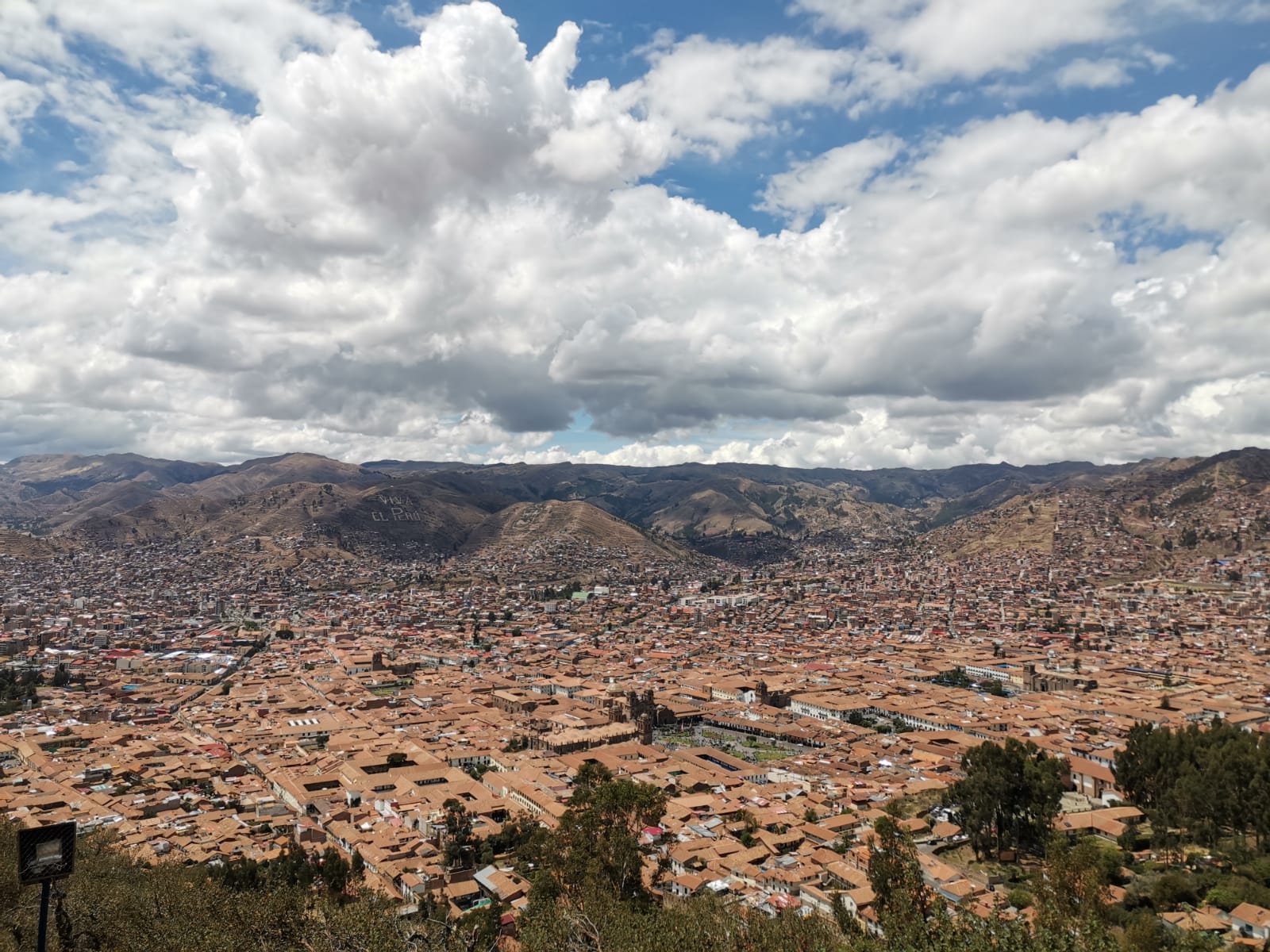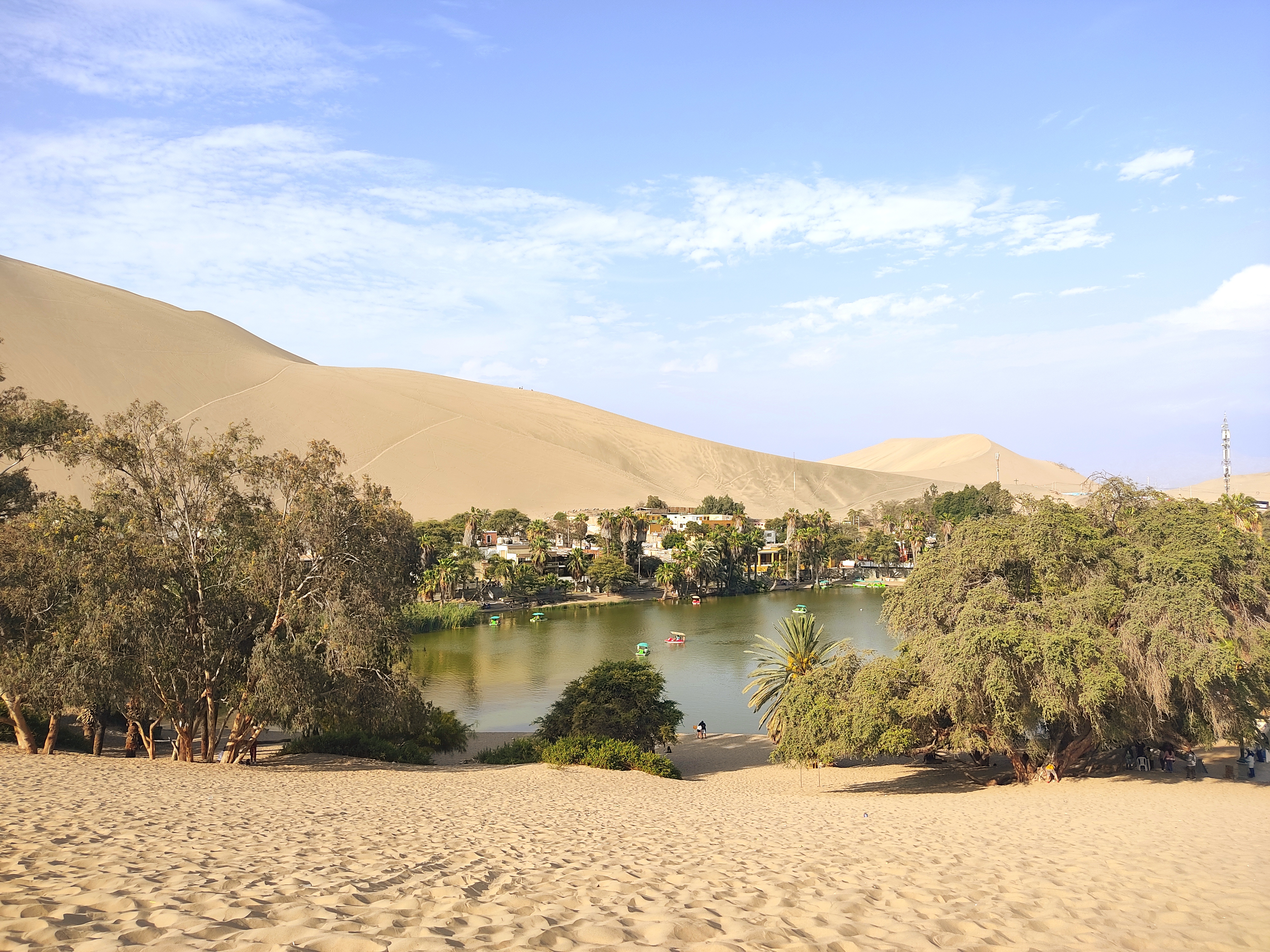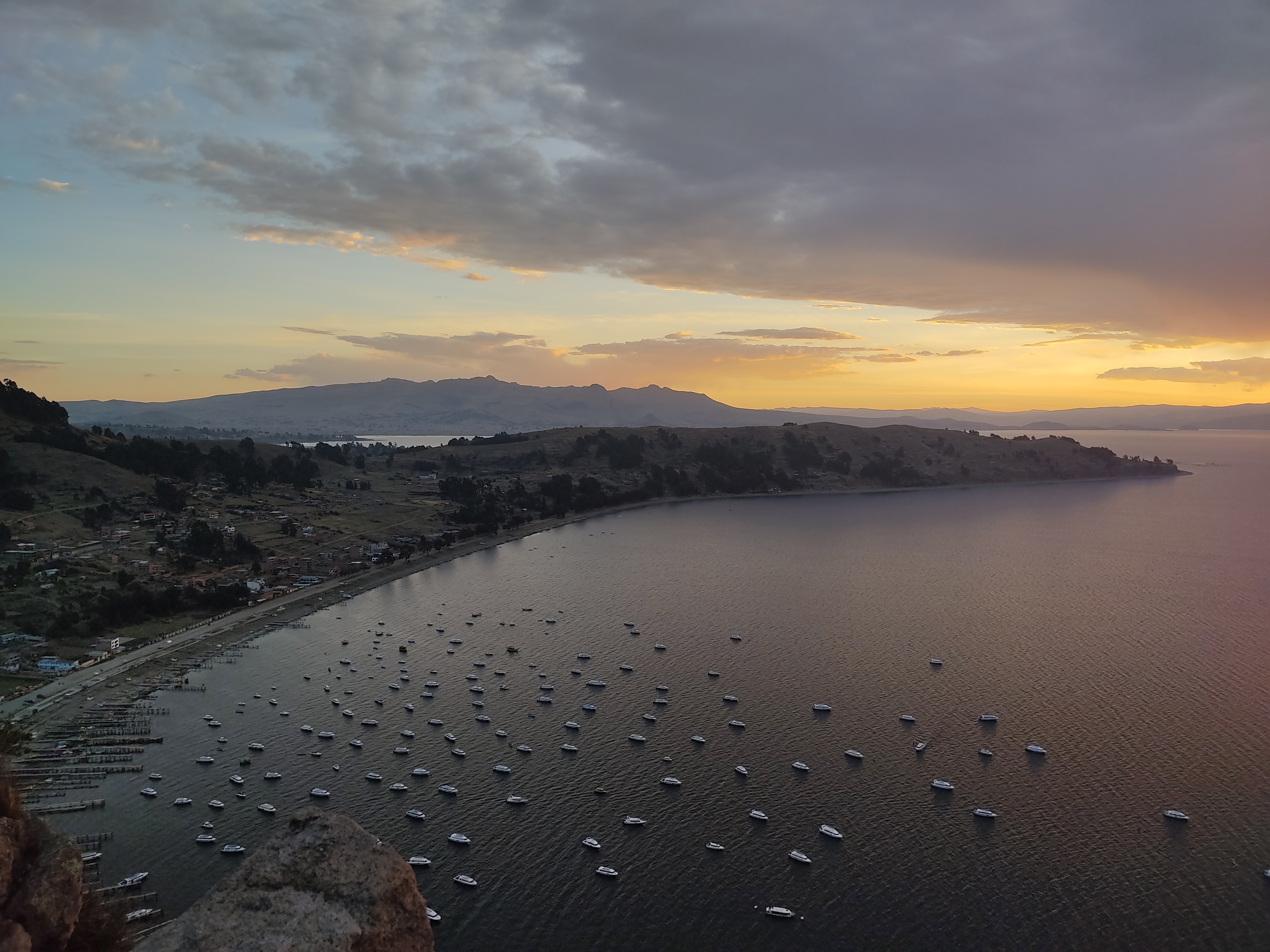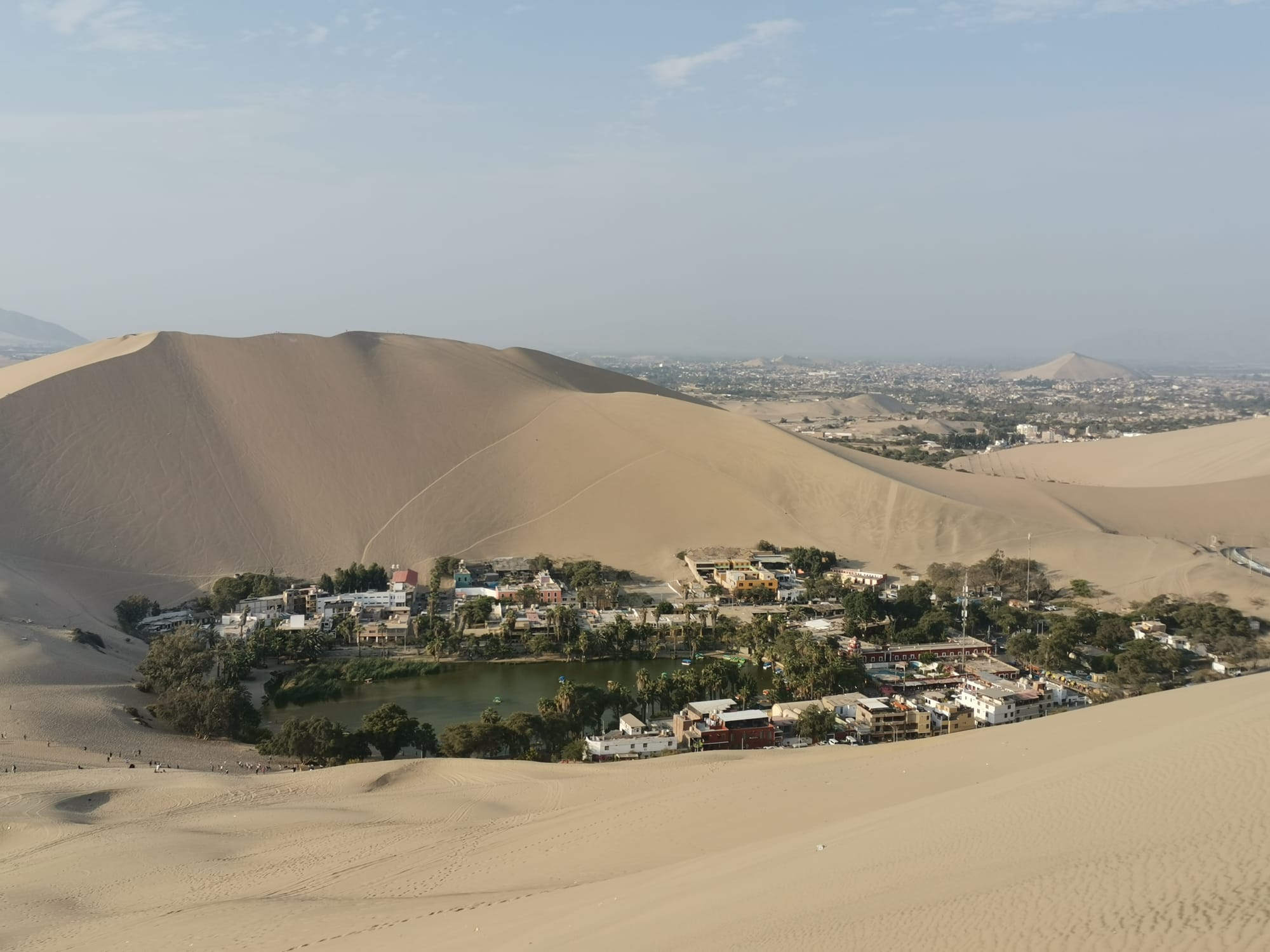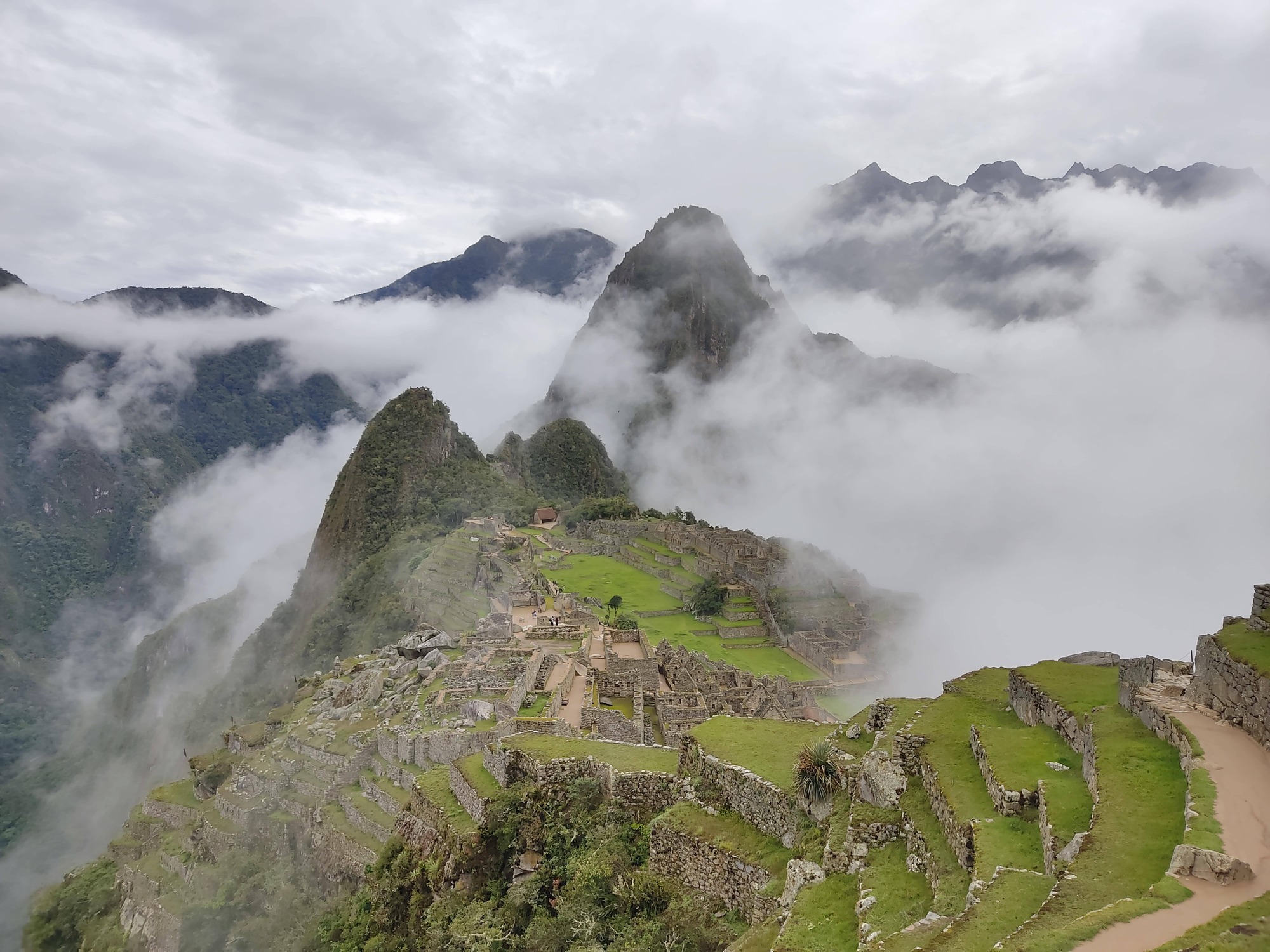Introduction
Cusco really needs no introduction, as the epicentre of tourism in Peru, finding itself on everone's bucket list. Although everyone visits Cusco for the same reason (Machu Picchu)Machu Picchu 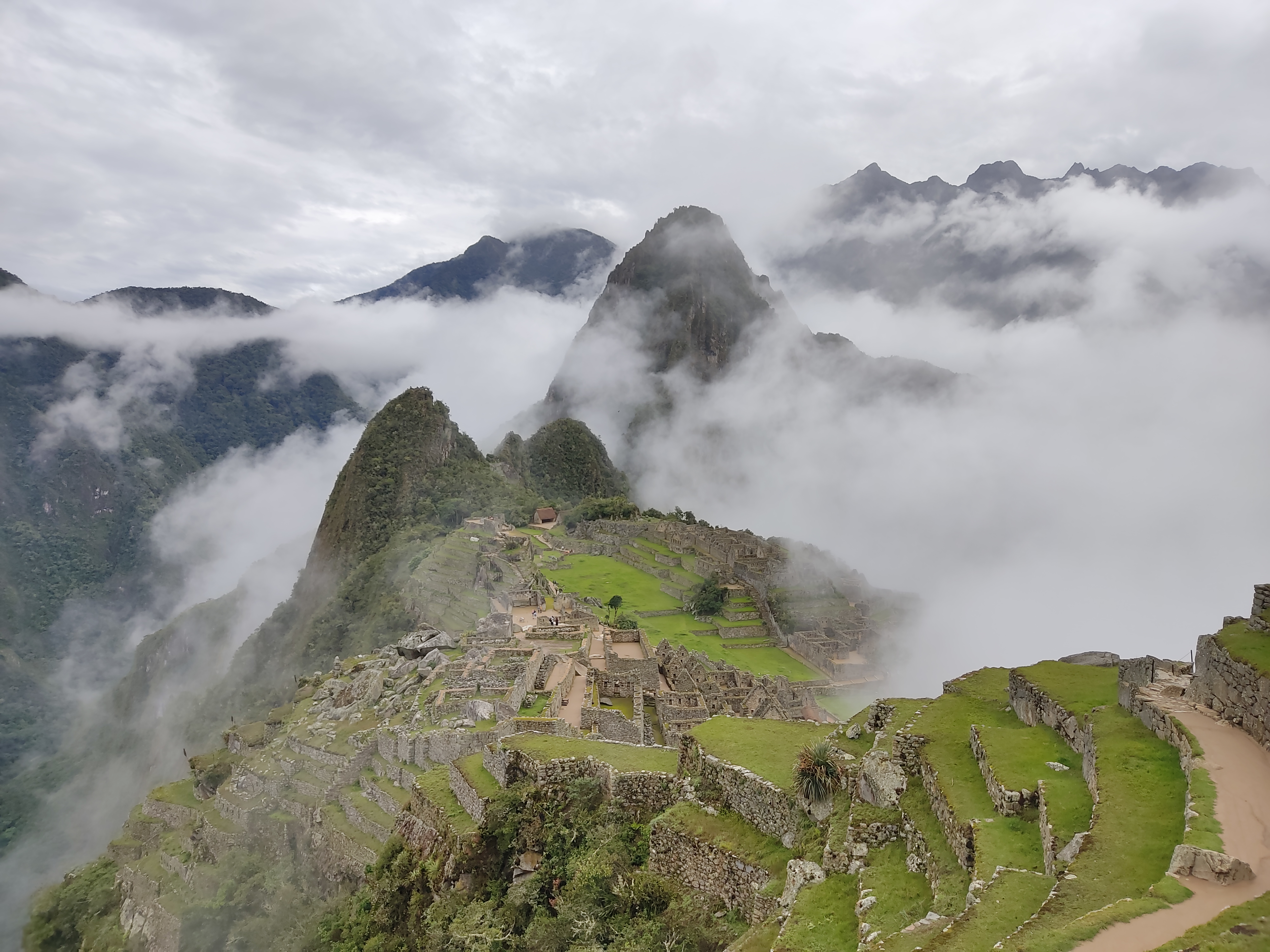 Machu Picchu, one of the seven wonders of the World and a UNESCO world heritage site, is the most visited attraction in Peru.
Machu Picchu, one of the seven wonders of the World and a UNESCO world heritage site, is the most visited attraction in Peru.
Click to read about our time hiking the Inca trail to Machu Picchu., the former centre of the Incan empireThe Incan empire stretched from modern day Colombia down to Bolivia and Chile, and was divided into four parts. Cusco was at the intersection of the four parts, and as far as the Incans were concened, it was the centre of the World. ends up surprising everyone with its history, culture, adventure, nature, gastronomy, and nightlife. There is so much to see and do in and around Cusco, and despite initially thinking we had booked more nights there than we needed, we ended up wishing we had more time. It's the kind of city where you don't really need too many plans, you can just wander around and see what adventures find you.
In Cusco City

Cusco is a fascinating city, whose past roots are still visible today. In true colonial style, when the Spanish conquered Cusco, they demolished the most important Incan buildings, constructing their own cathedrals and palaces where they stood. As a result, many of the buildings in Cusco have traditional Incan foundations, but the walls change halfway up into more colonial-like structures, creating a fusion of architecture. Walking through the streets of Cusco takes you back to the past lives of the city, with Incan influences clear amongst the colonial infrastructure, nowhere more so than at QorikanchaQorikancha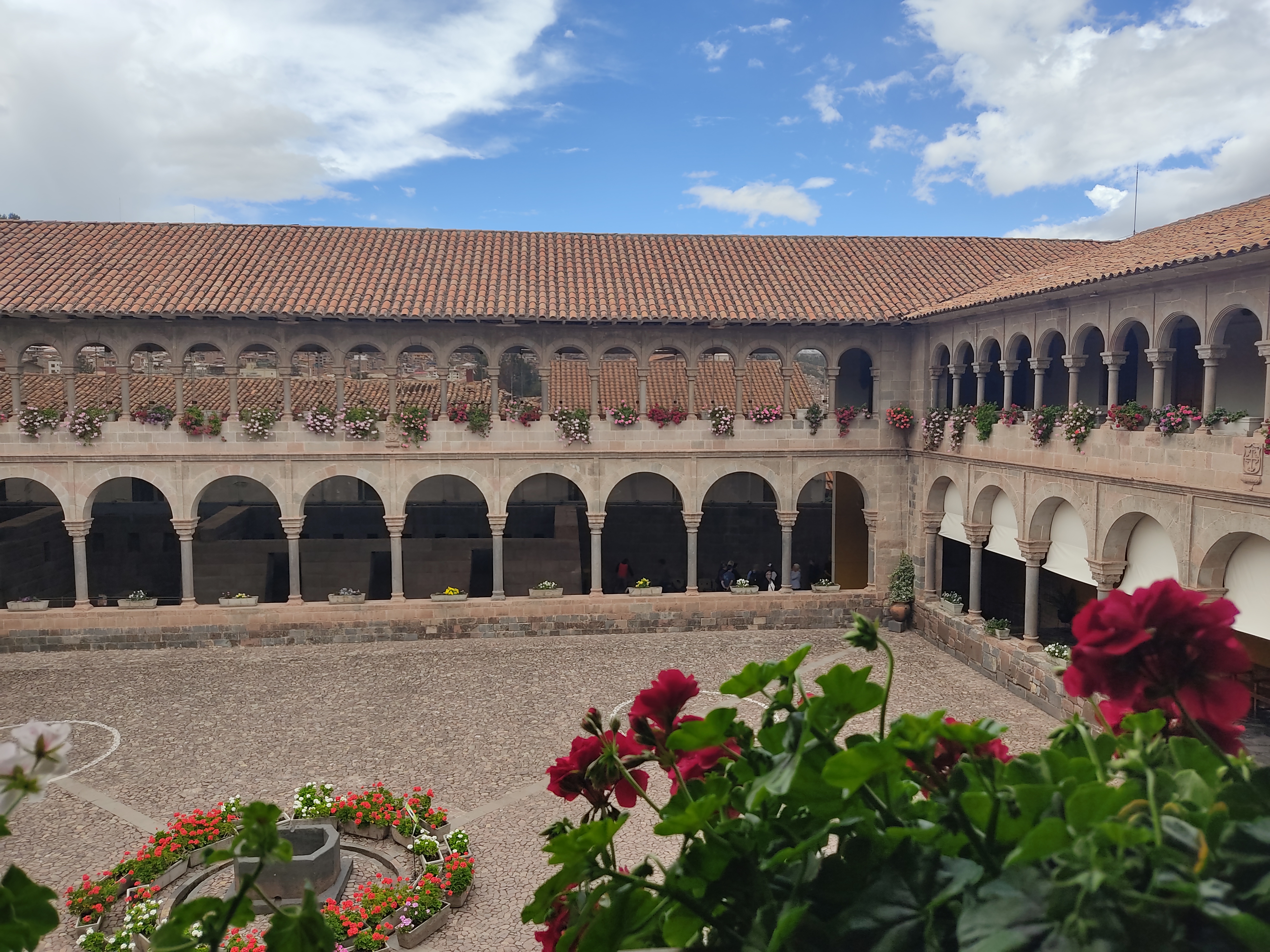 Qorikancha was once the most sacred building in the Inca empire - the temple of the sun. It is said that the walls were covered in gold, but when the spanish arrived they stripped all the gold, knocked down the temple and built a monastery in its place. The monestary is open for visitors today, and the original Incan foundations are still visible in many places.. This Spanish monastery was built on top of the ruins of the ancient Incan sun temple.
Qorikancha was once the most sacred building in the Inca empire - the temple of the sun. It is said that the walls were covered in gold, but when the spanish arrived they stripped all the gold, knocked down the temple and built a monastery in its place. The monestary is open for visitors today, and the original Incan foundations are still visible in many places.. This Spanish monastery was built on top of the ruins of the ancient Incan sun temple.
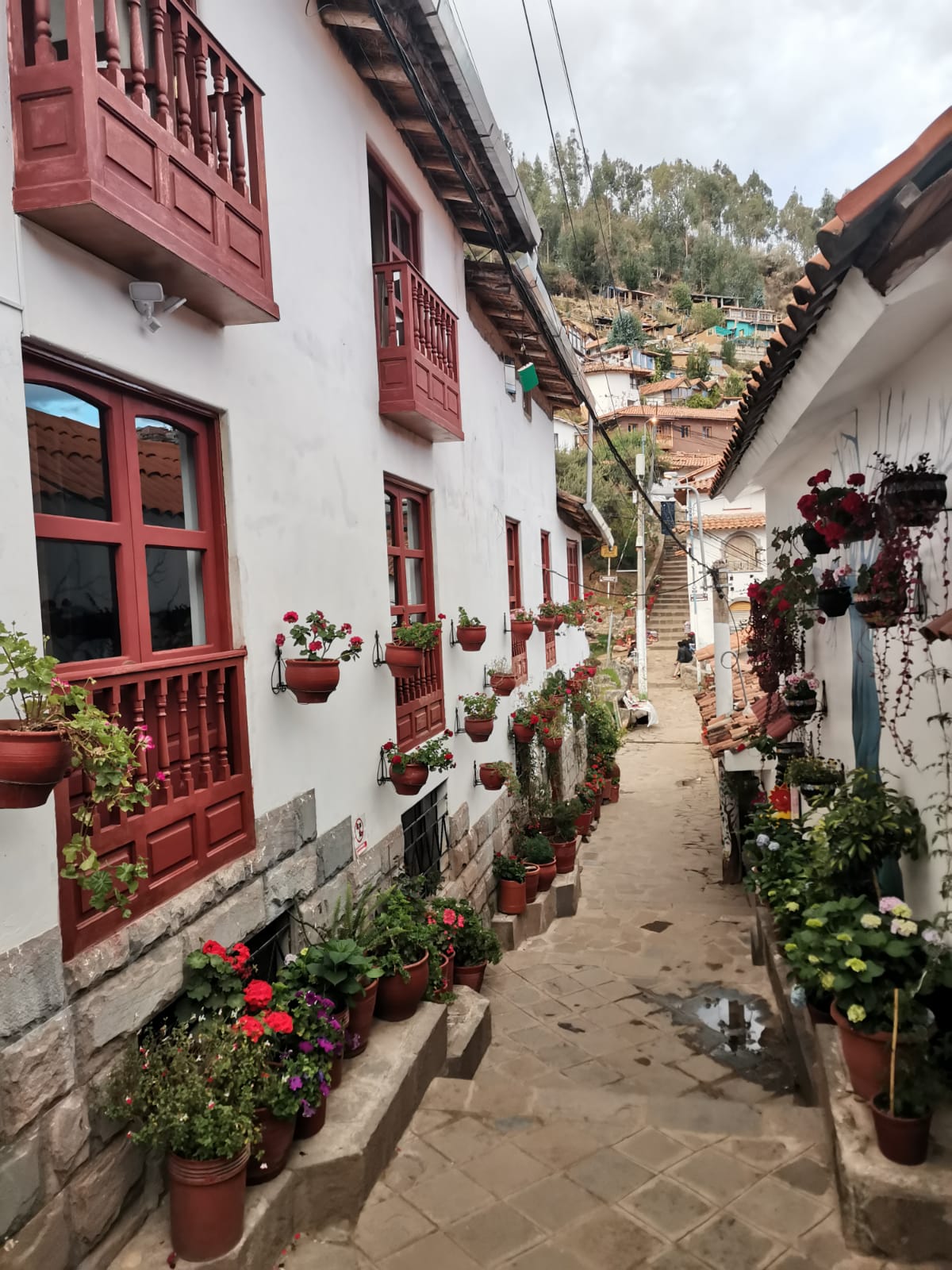
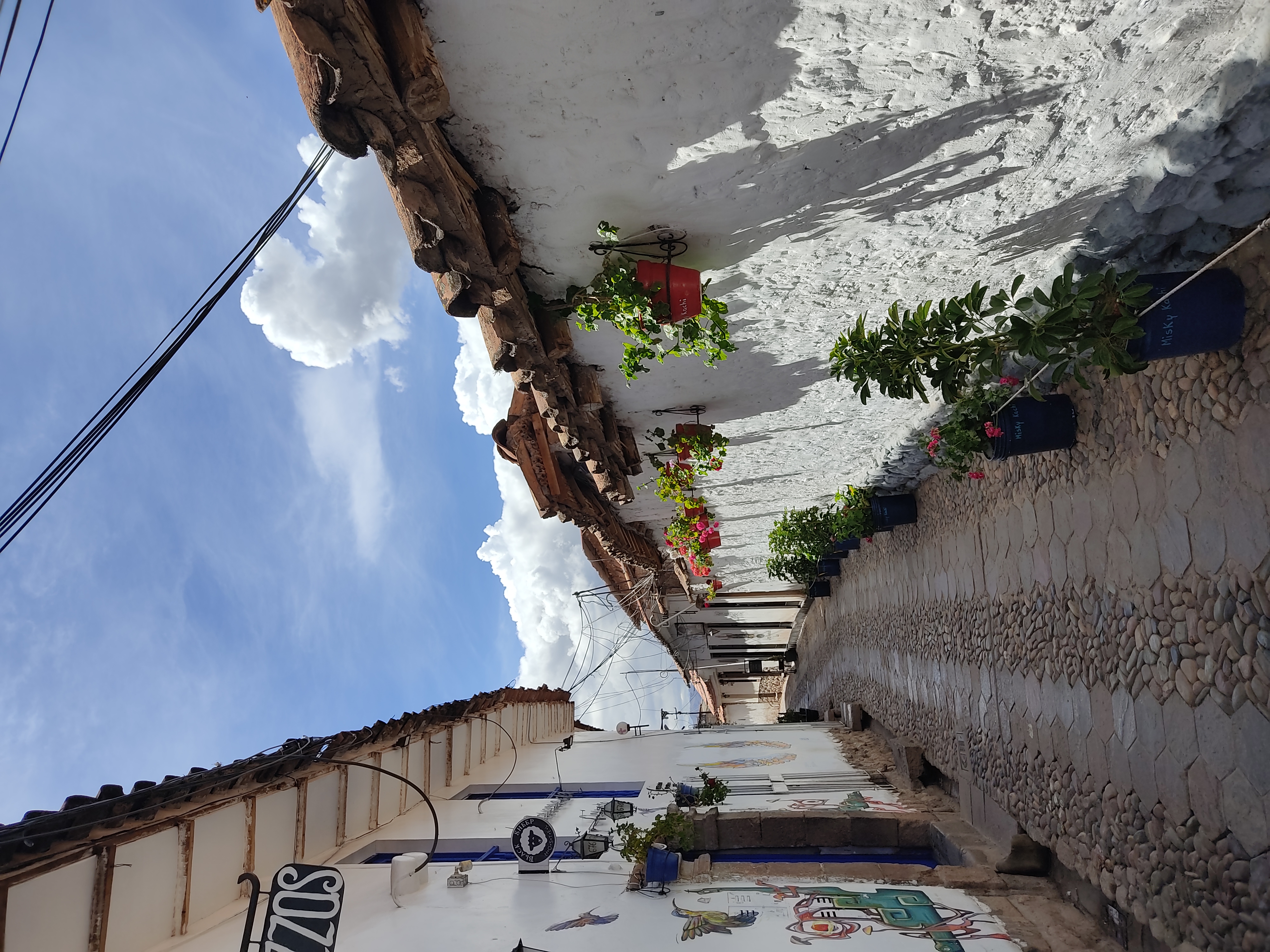
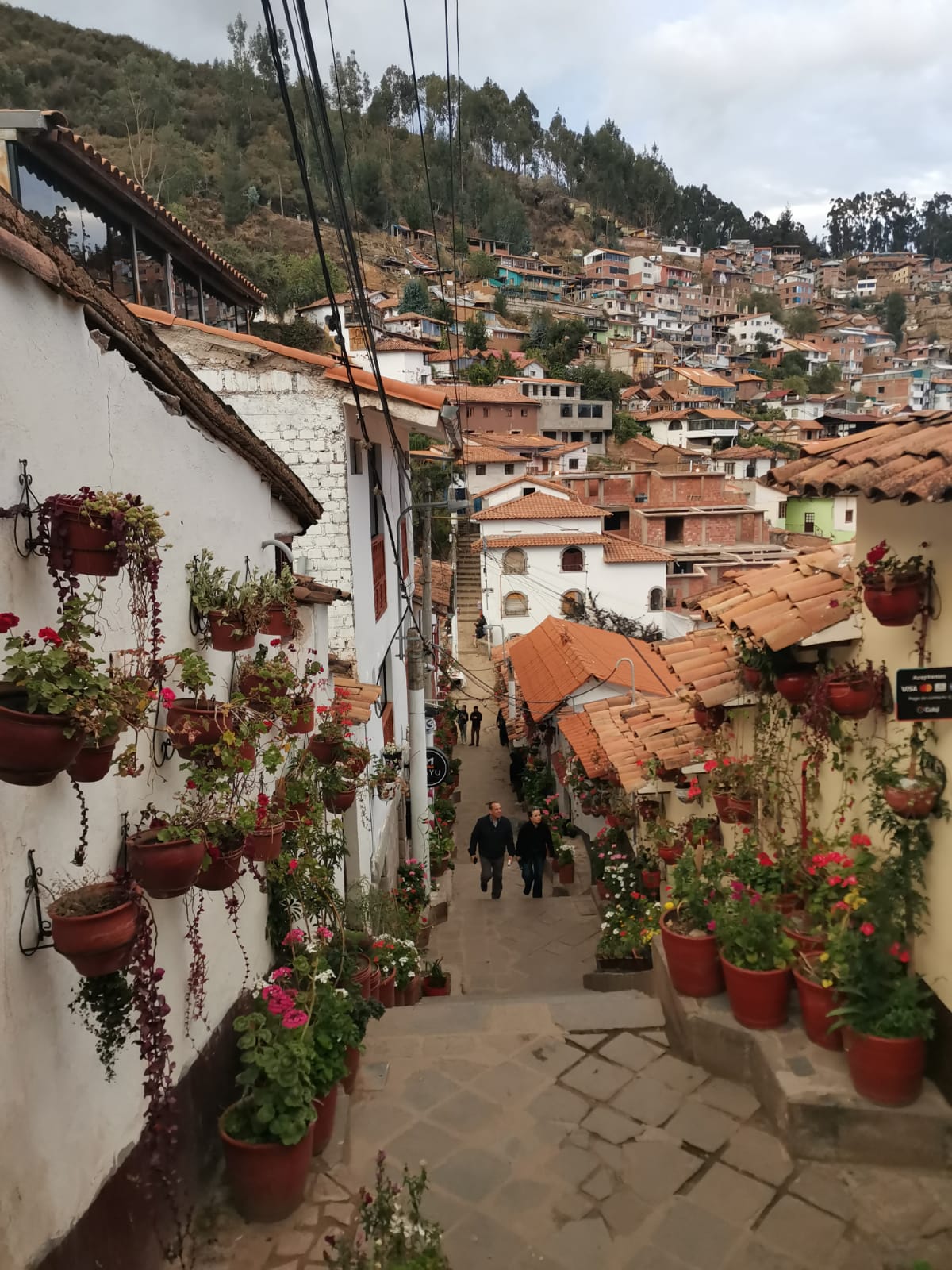
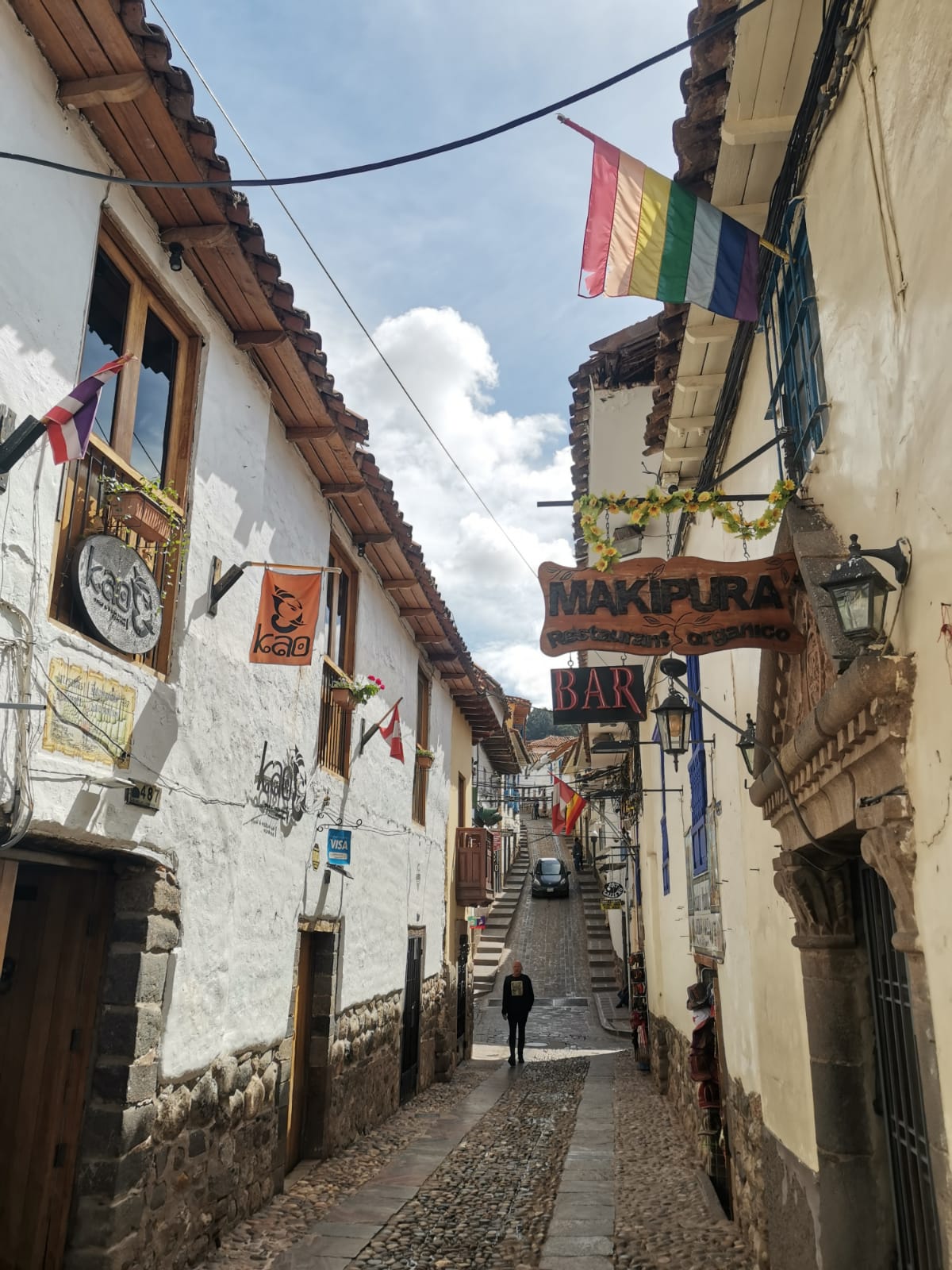
Cusco is a very safe and pleasant city to walk around, with several large squares (confusingly) and colourful narrow streets. The main Plaza, flanked by impressive churches, was our favourite place to hang out and see the lively city at night. Most evenings, there is something going on in the main square. In our short time in Cusco, we saw a few dance performances, a protest about fair wages, a book festival, and a military procession, as well as several small markets in the surrounding areas. Despite the hot days, evenings in Cusco can get chilly, so the people roaming the streets offering to sell hot drinks, snacks, and refreshments are very welcome!
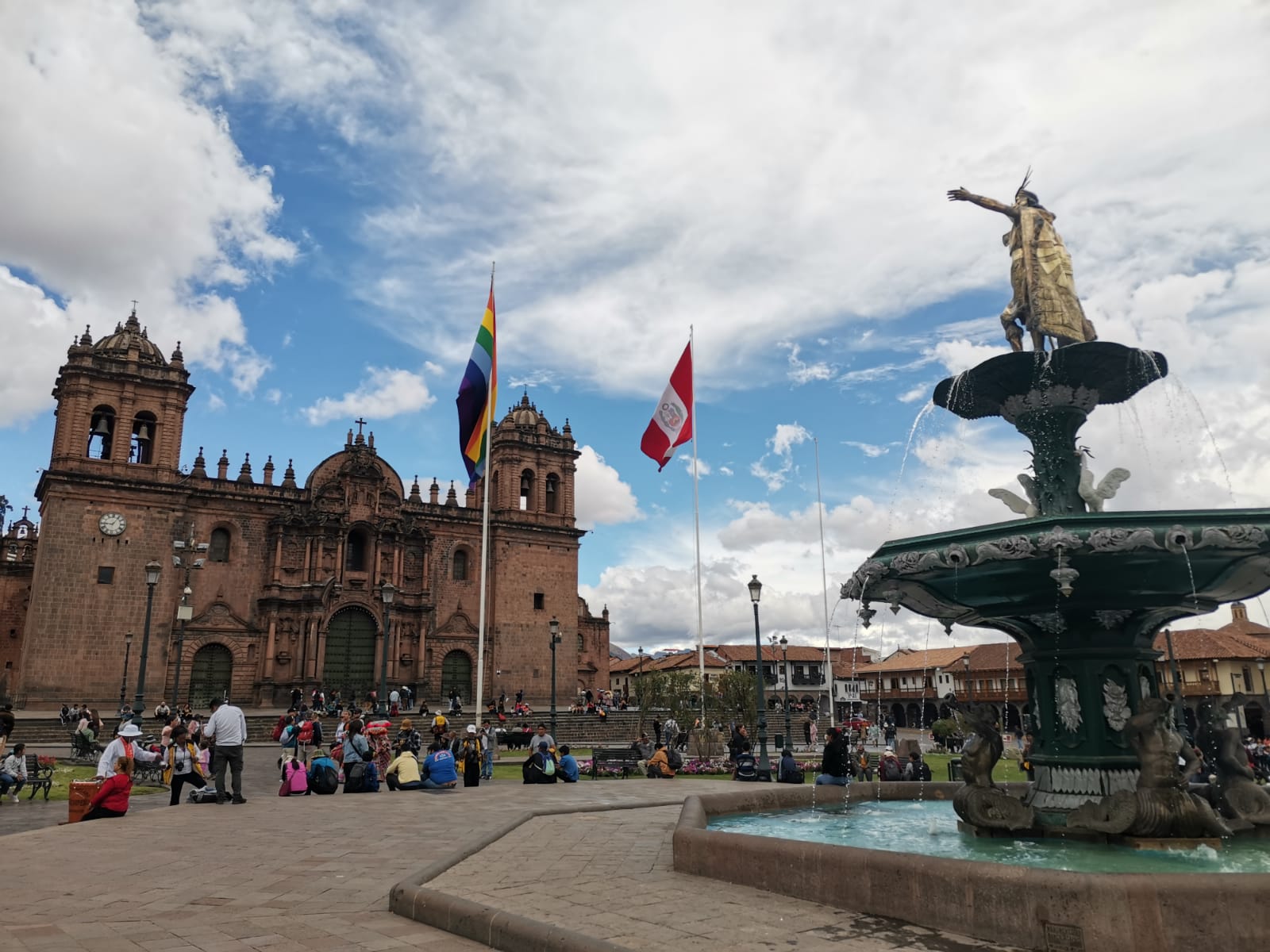
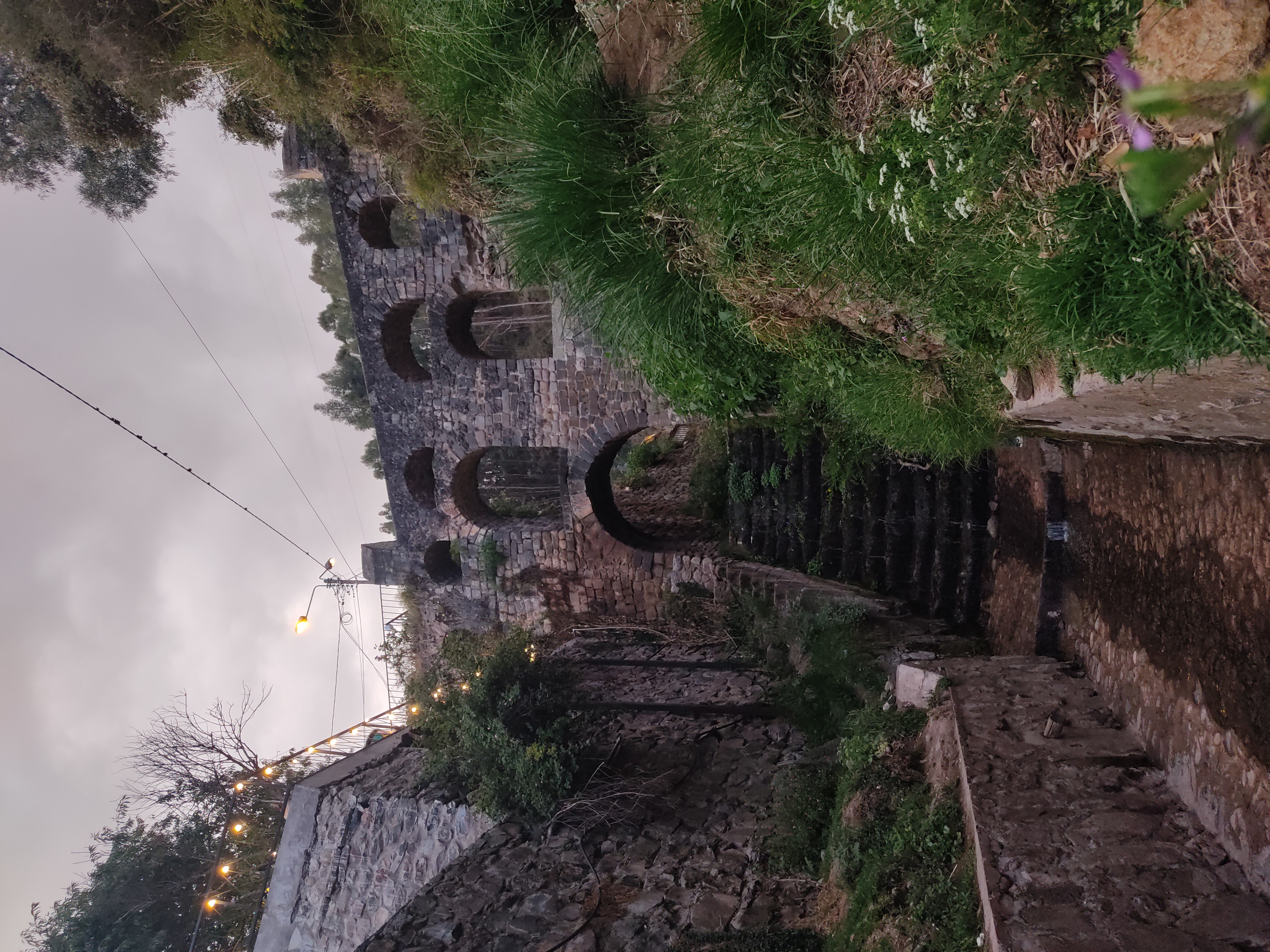
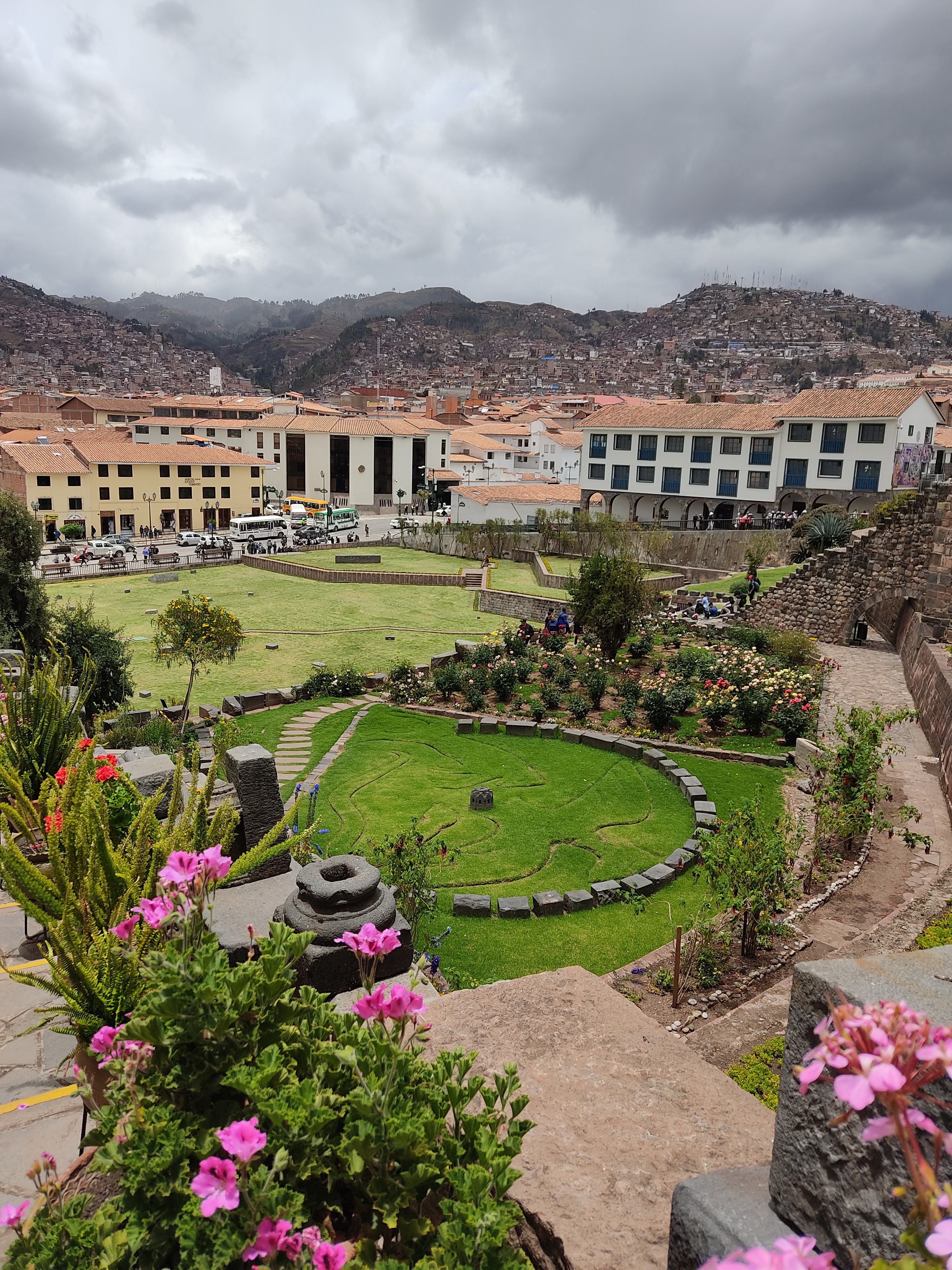
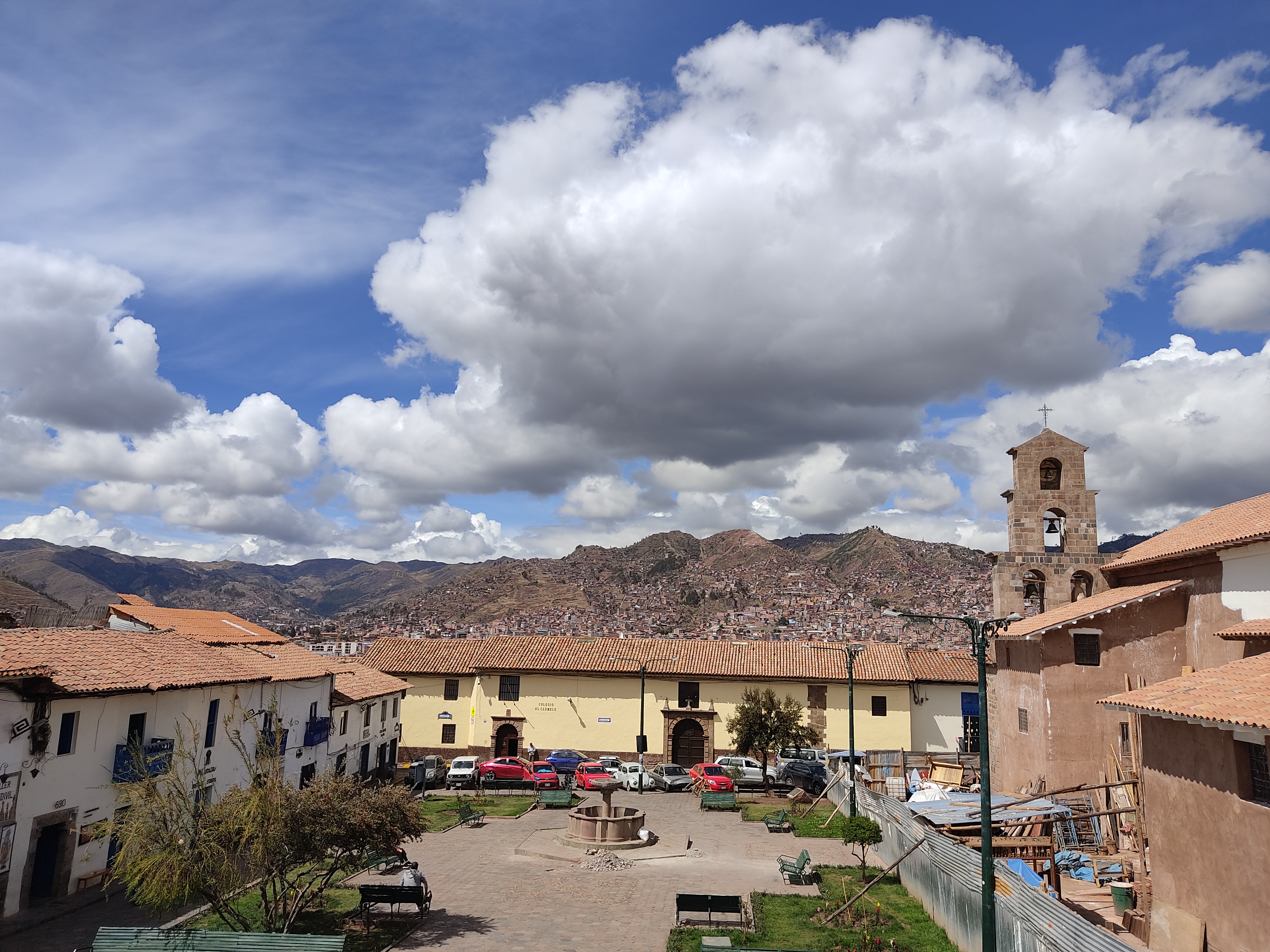

Cusco is situated at the base of a valley, which has its pros and cons. Unfortunately, the streets are very steep We met lots of furry friends climbing Cusco's steep streets, who seemed just as tired as we did at the top! and the city's altitude makes pausing to catch your breath a necessity. The benefit of this is that there are several points in the city which offer impressive panoramic views of the red-roofed houses, sprawling out over the surrounding hillsides.
We met lots of furry friends climbing Cusco's steep streets, who seemed just as tired as we did at the top! and the city's altitude makes pausing to catch your breath a necessity. The benefit of this is that there are several points in the city which offer impressive panoramic views of the red-roofed houses, sprawling out over the surrounding hillsides.
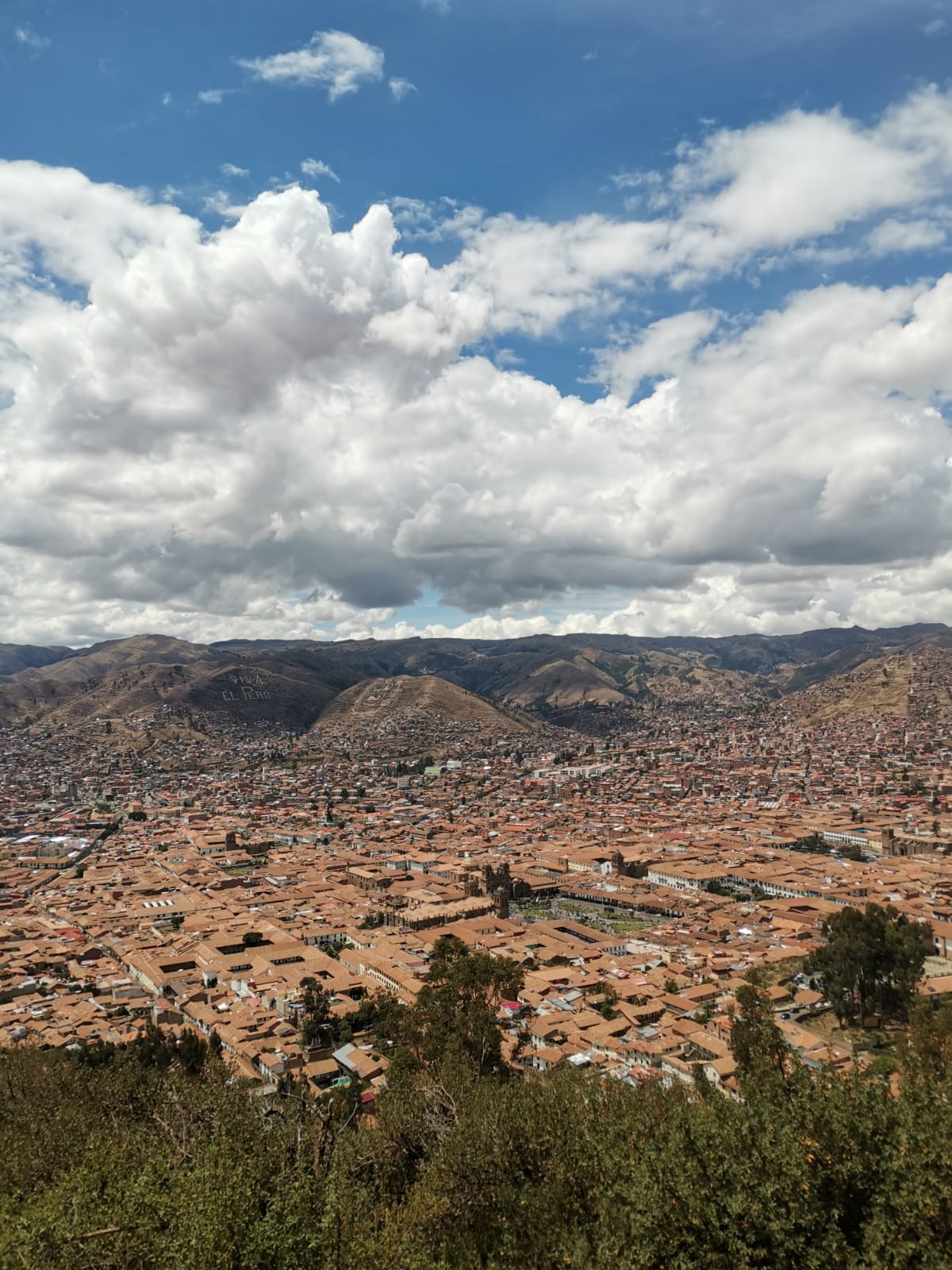
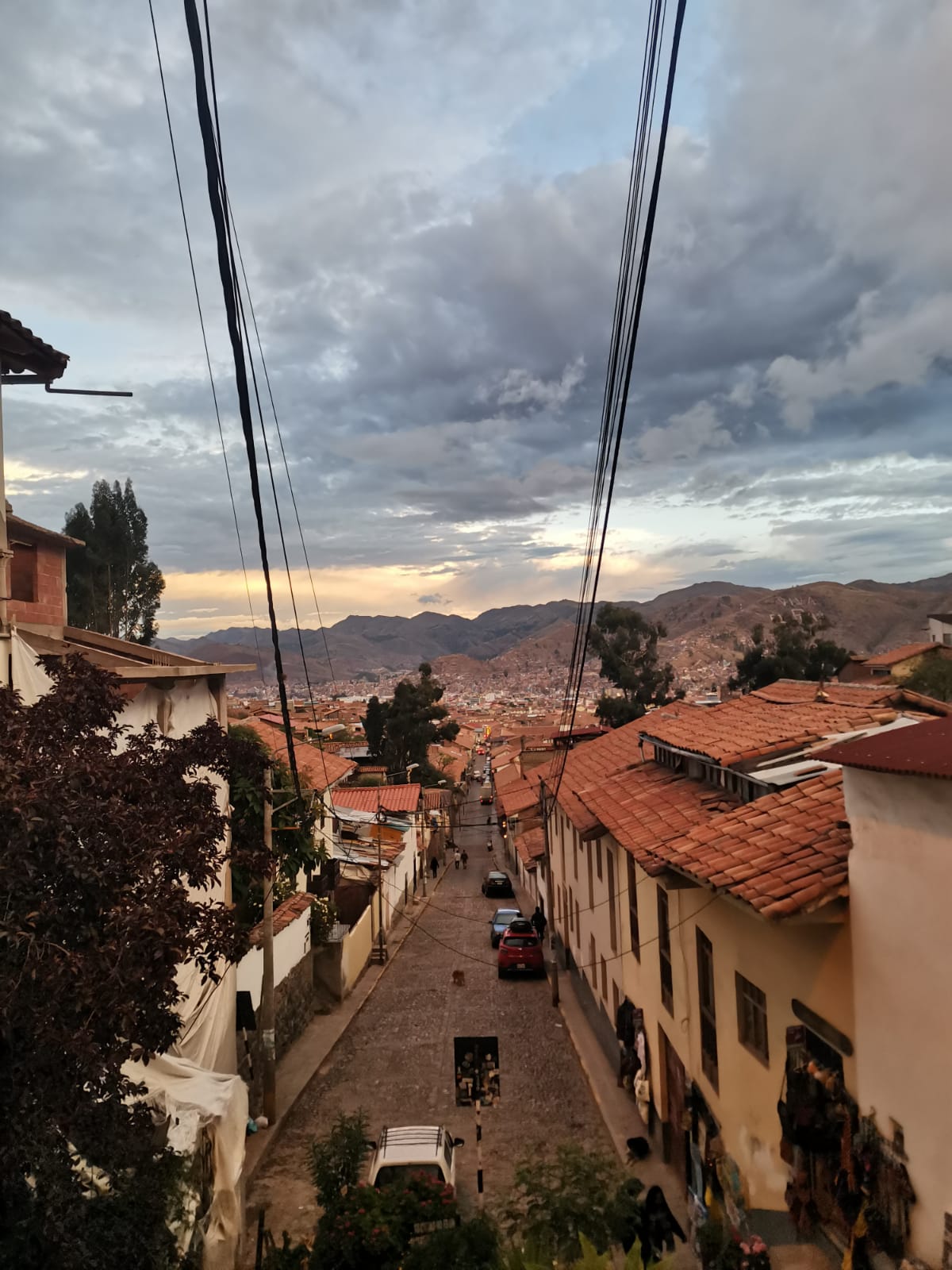
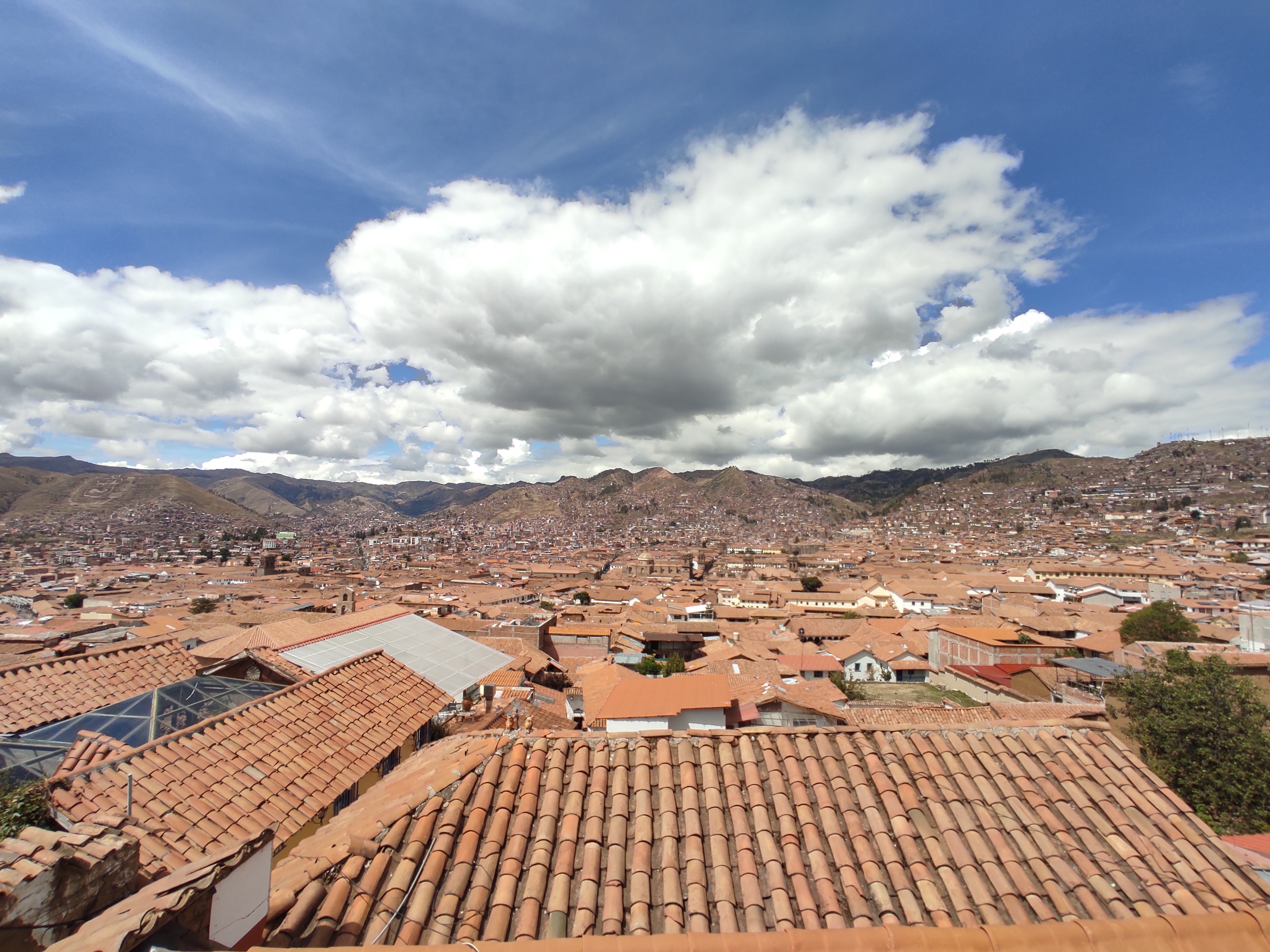
If you persevere, eventually you will reach the edge of the city where the Cristo blancoThe huge white statue of Christ was a gift to Cusco, standing high up on the hills overlooking the city. It can easily be seen from the main square, and marks an interesting area to explore. stands. These hilltops don't only offer the best views, but the surrounding woodlands are also home to several Incan ruinsCusco Ruins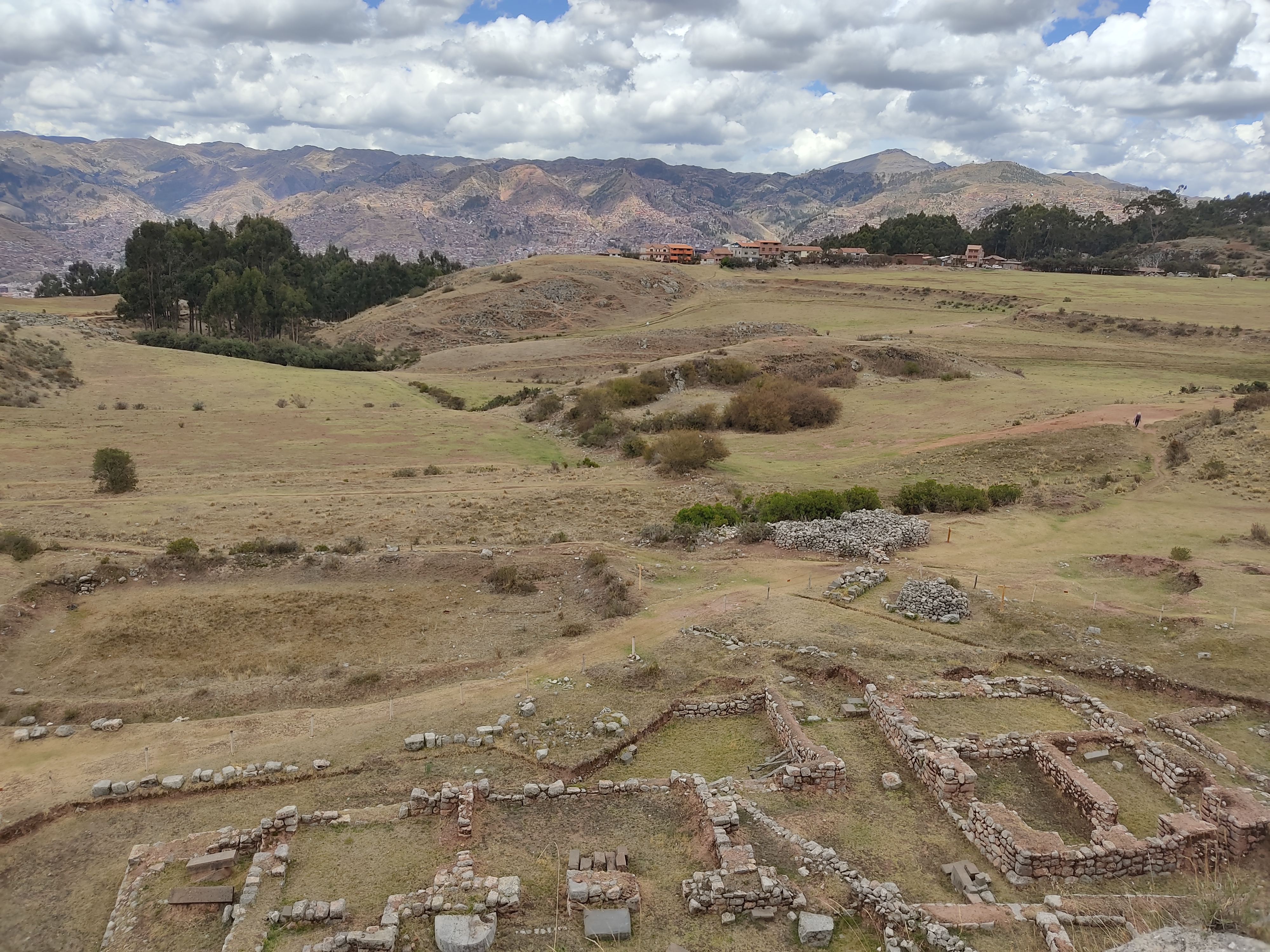 There are actually lots of ruins to see around the edge of the city, some of which are free and others require the tourist pass ticket. The view of the ancient ruins, cityscape, and surrounding countriside is an enchanting combination. and a curious set of ancient tunnelsZona X
There are actually lots of ruins to see around the edge of the city, some of which are free and others require the tourist pass ticket. The view of the ancient ruins, cityscape, and surrounding countriside is an enchanting combination. and a curious set of ancient tunnelsZona X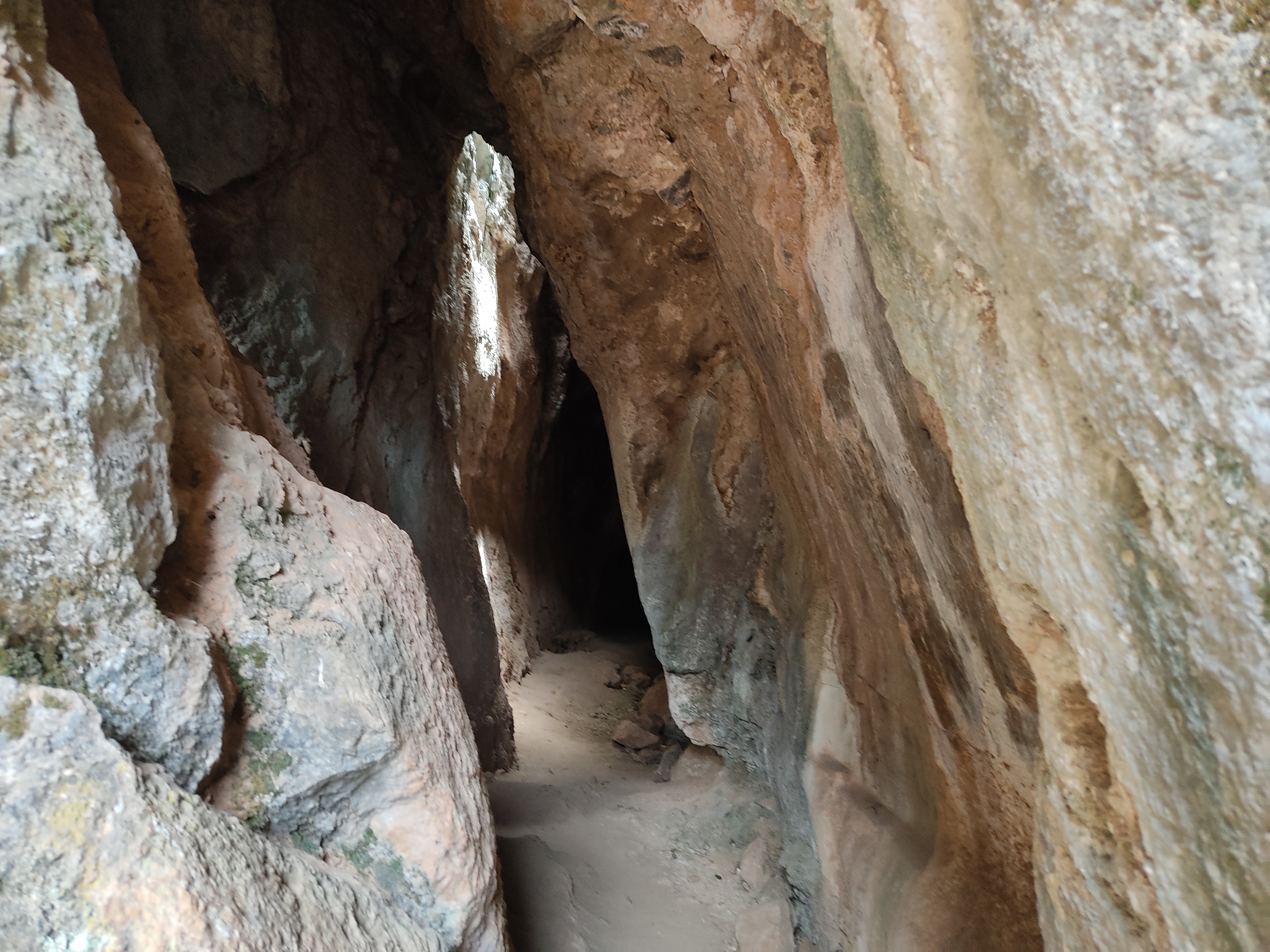 Next to the Sacsayhuamán ruins, there are a set of dark tunnels and caves in the rocky hillside. There was no-one around when we visited, so it felt a lot like a horror film as we crept through the darkness. which can be explored on foot or horsebackHorse riding
Next to the Sacsayhuamán ruins, there are a set of dark tunnels and caves in the rocky hillside. There was no-one around when we visited, so it felt a lot like a horror film as we crept through the darkness. which can be explored on foot or horsebackHorse riding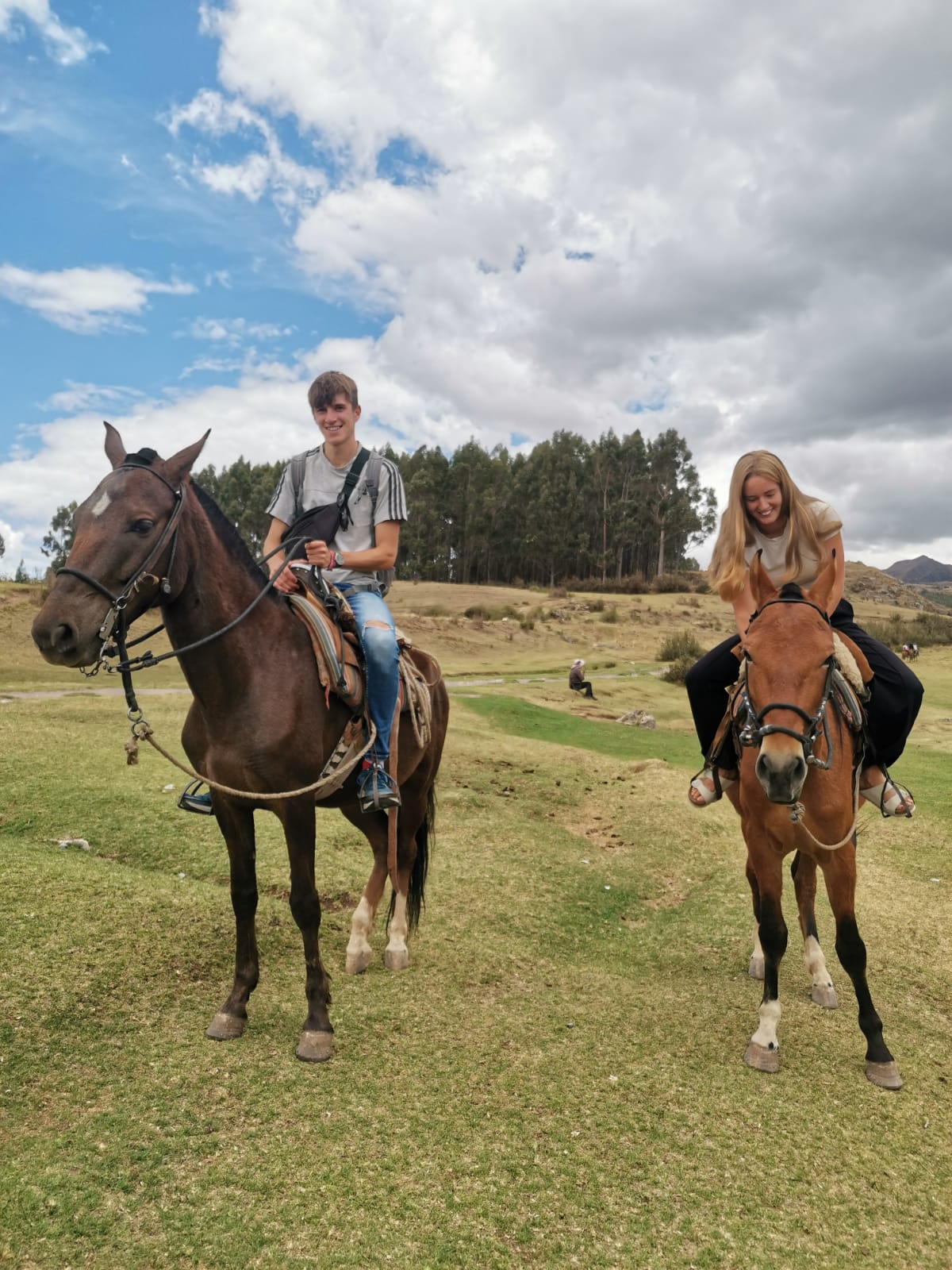 As we were admiring the view from Cristo Blanco, we found a company offering tours from a nearby stable. This was a relaxing way to explore the hillsides surrounding Cusco and see some of its Incan ruins..
As we were admiring the view from Cristo Blanco, we found a company offering tours from a nearby stable. This was a relaxing way to explore the hillsides surrounding Cusco and see some of its Incan ruins..
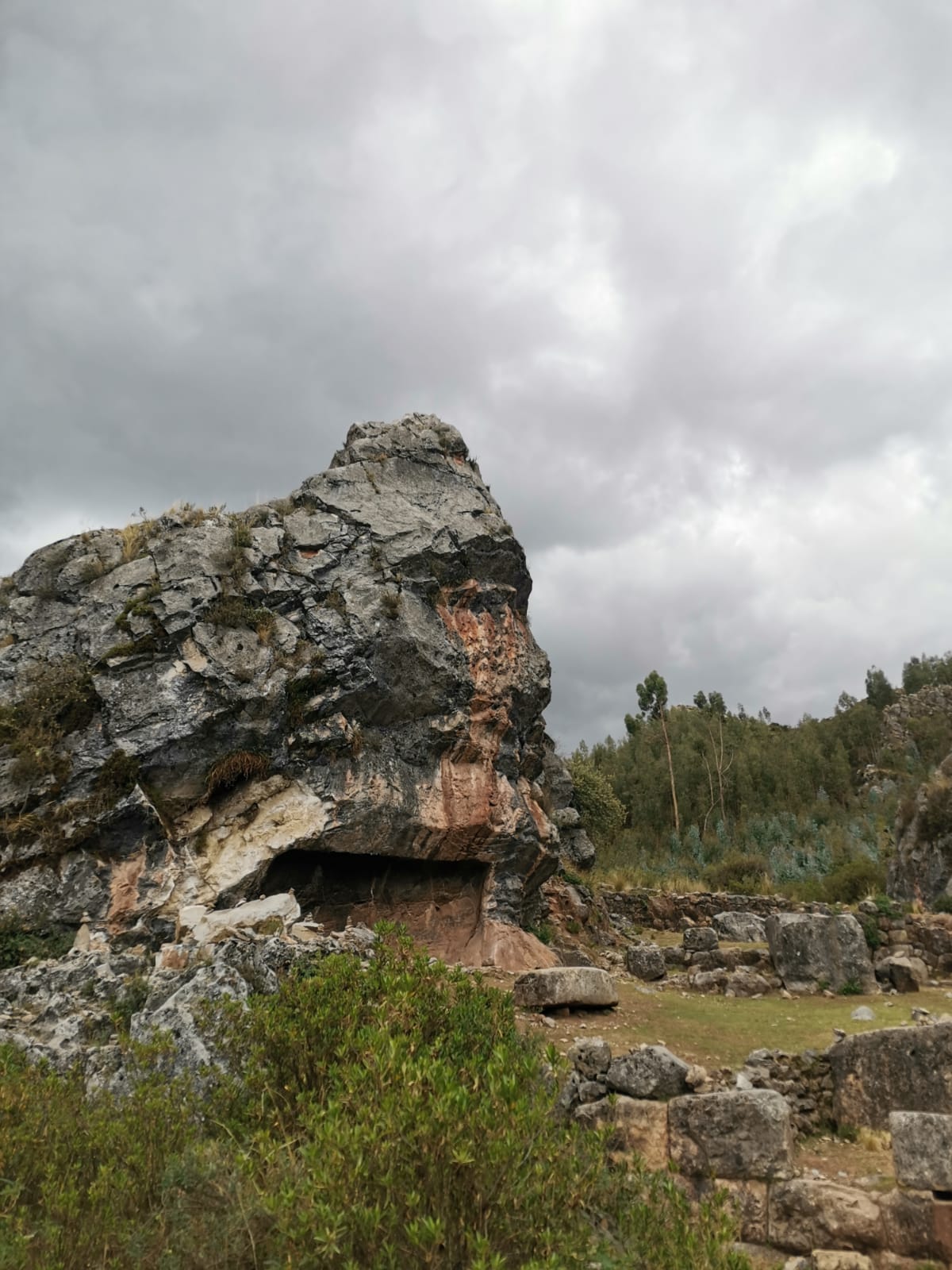
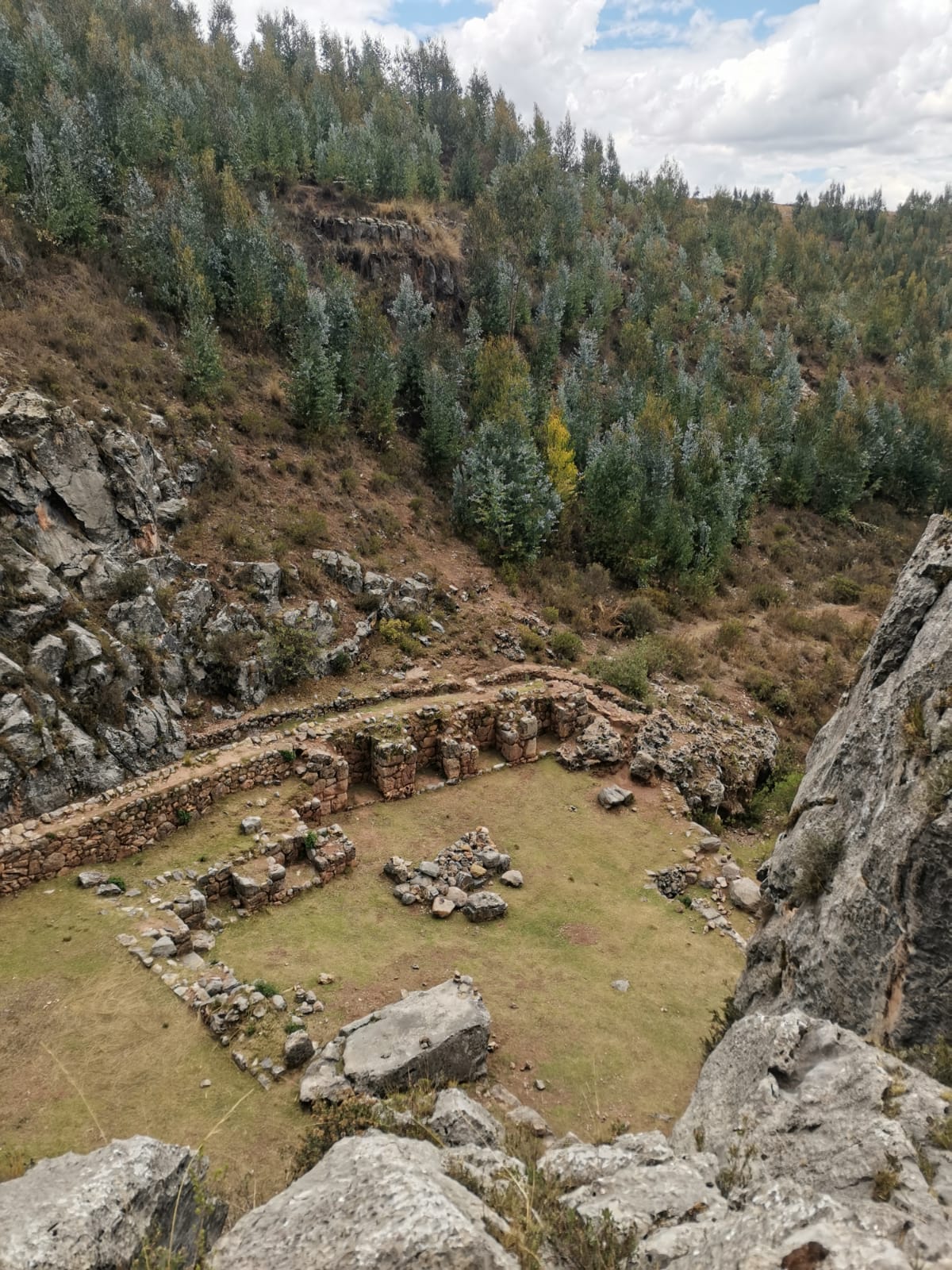
Like the rest of Peru, we were pleasantly surprised by the range of food and drinks in Cusco. The more touristy areas of Cusco had plenty of vegetarian You wouldn't be able to tell this dish is 100% vegan. Because there are so many vegetarian restaurants, a lot of restaurants have signs outside to say they also have non-vegetarian options on their menu!, vegan, and international restaurants, whereas the centre had lots of street vendors selling fruits, juices, churros and other snacks. After a hot day exploring the city, there was nothing better than sweet, refreshing slices of pineapple and watermelon, or a glass of orange juice freshly pressed in front of you as you wait.
You wouldn't be able to tell this dish is 100% vegan. Because there are so many vegetarian restaurants, a lot of restaurants have signs outside to say they also have non-vegetarian options on their menu!, vegan, and international restaurants, whereas the centre had lots of street vendors selling fruits, juices, churros and other snacks. After a hot day exploring the city, there was nothing better than sweet, refreshing slices of pineapple and watermelon, or a glass of orange juice freshly pressed in front of you as you wait.
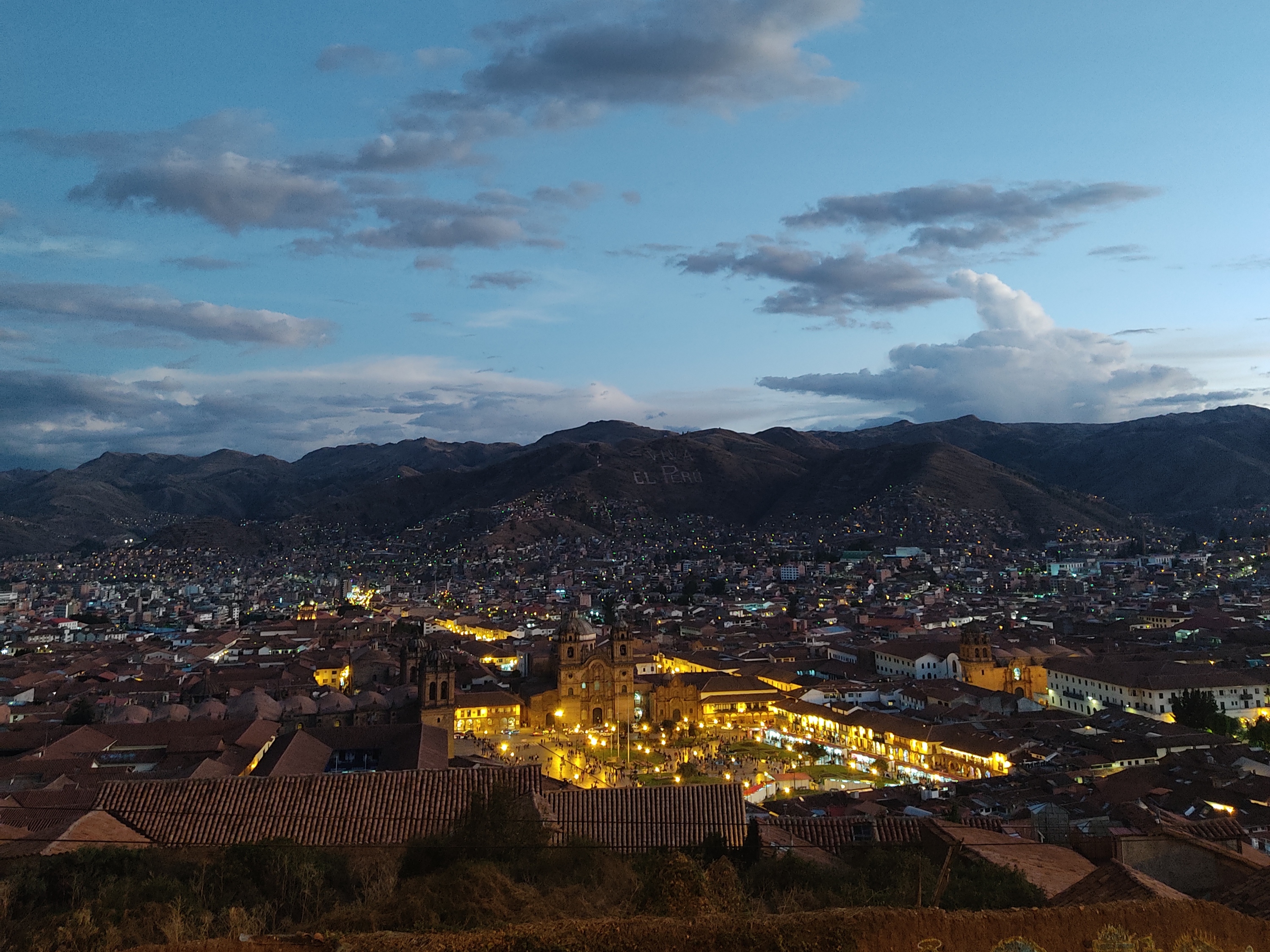
The epicentre of food in Cusco is the San Pedro market. This indoor market was one of the best in Peru, with dedicated aisles for things like fruit, veg, chocolate, bread, and the fresh smoothies we had seen all over Peru, as well as hot street food and even a breakfast section, serving soups, sandwiches, pastries and quinoa porridge. The most intriguing were these stalls which were somewhere between restaurants and street food, with a counter and stalls where locals come and sit. Here, a ‘meal of the day’ is a set menu of a soup, a main course, and a hot drink for S/.7 (about £1.50).
Around the Cusco Region
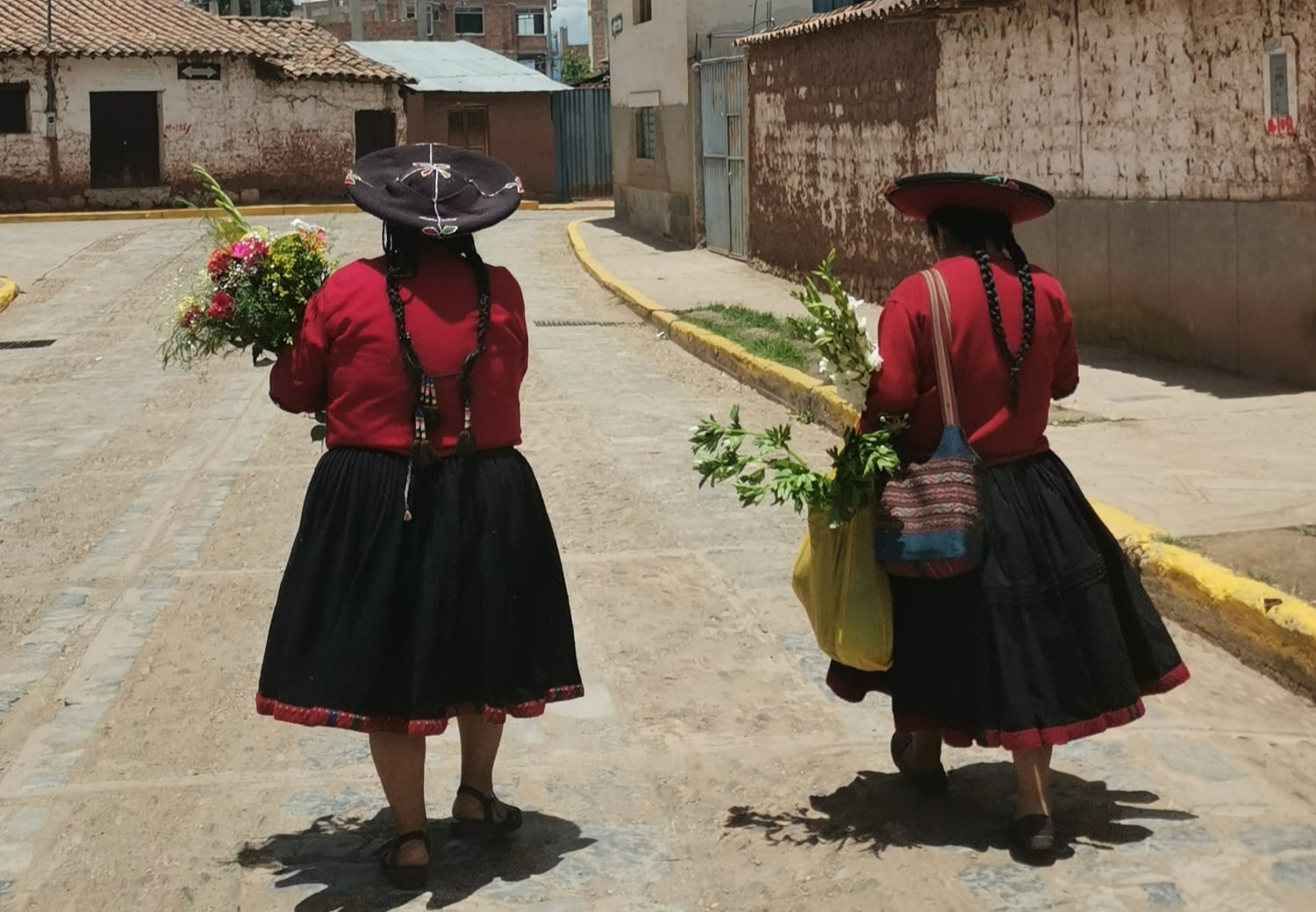
Cusco has plenty of quirks to charm everyone, but it's what lies outside of the city that attracts so many visitors. From Cusco, there are several ways to get out into the surrounding region, to see the traditional towns, staggering landscapes, and unbeatable hikes. However, since Cusco and the surrounding areas are at such high altitudes, these excursions can be tough so it is best to take it slow.
Machu Picchu
It's no secret that Cusco is the city closest to Machu Picchu, one of the seven wonders of the World, and it is safe to say that most people visiting Cusco will make the trip to the famous archaeological site at some point. There are a few different ways to see Machu Picchu, the most famous of which is a 4-day hike along the classic Inca trail, which we have written about seperately.
Rainbow Mountain
Rainbow mountainThere are actually two 'rainbow mountains' in Cusco. This one is the most famous, officially known as vinicunca, or montaña de siete colores, and the other is less busy and called Palccoyo is one of the most visited places around Cusco, second only to Machu Picchu. It can be reached by a three hour drive followed by an hour hiking uphill, so the main way to visit is on an organised tour.
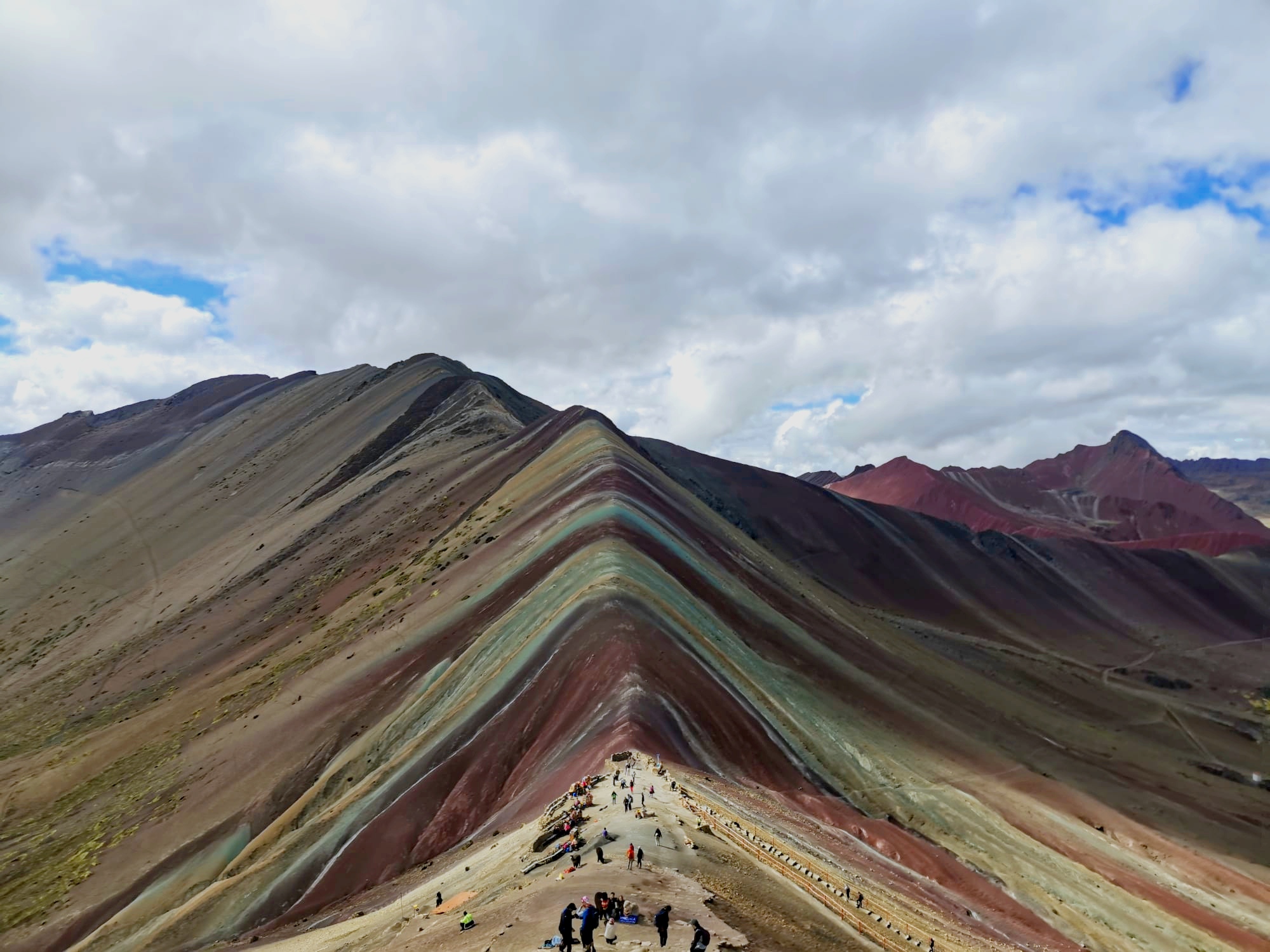
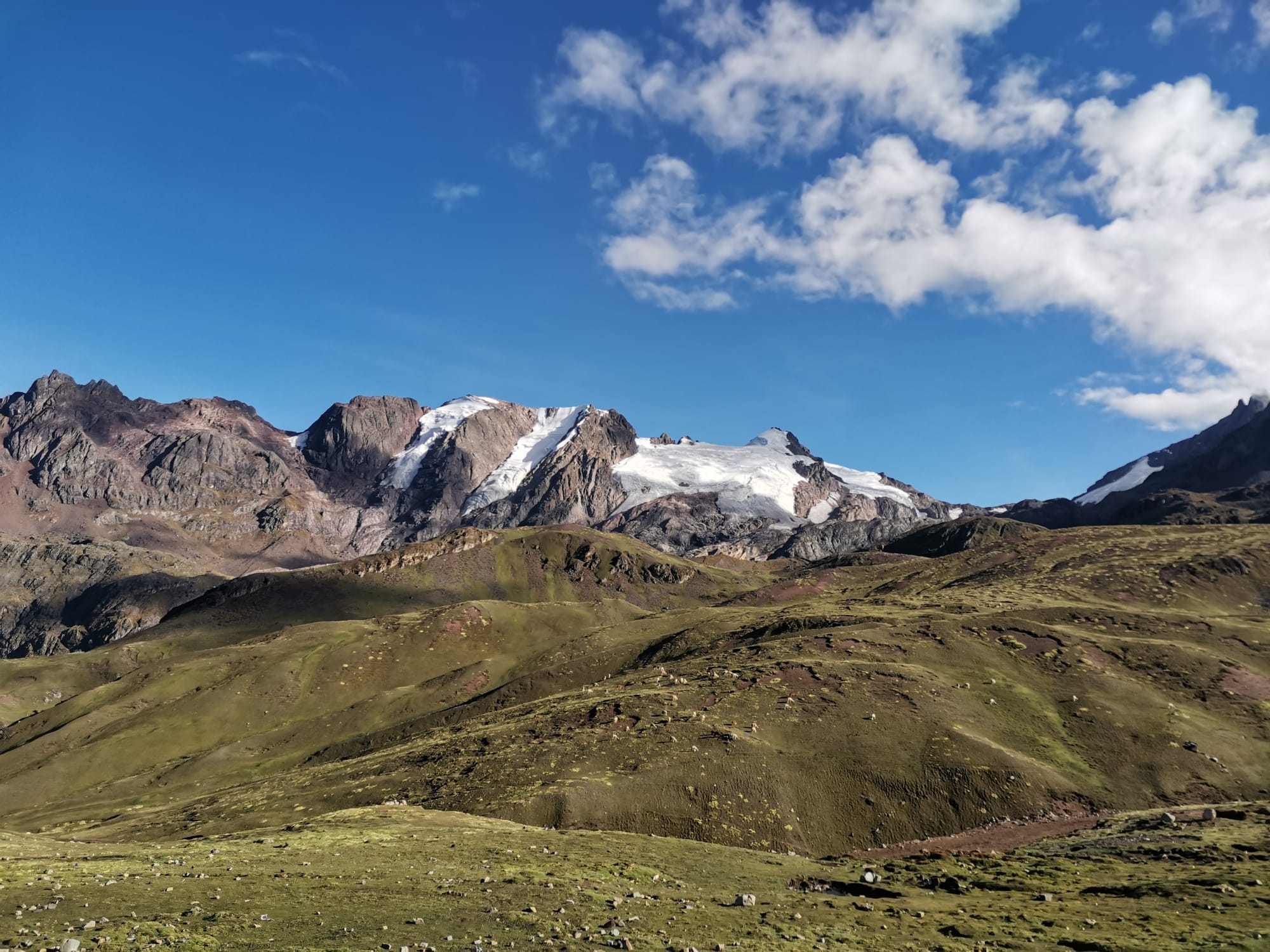
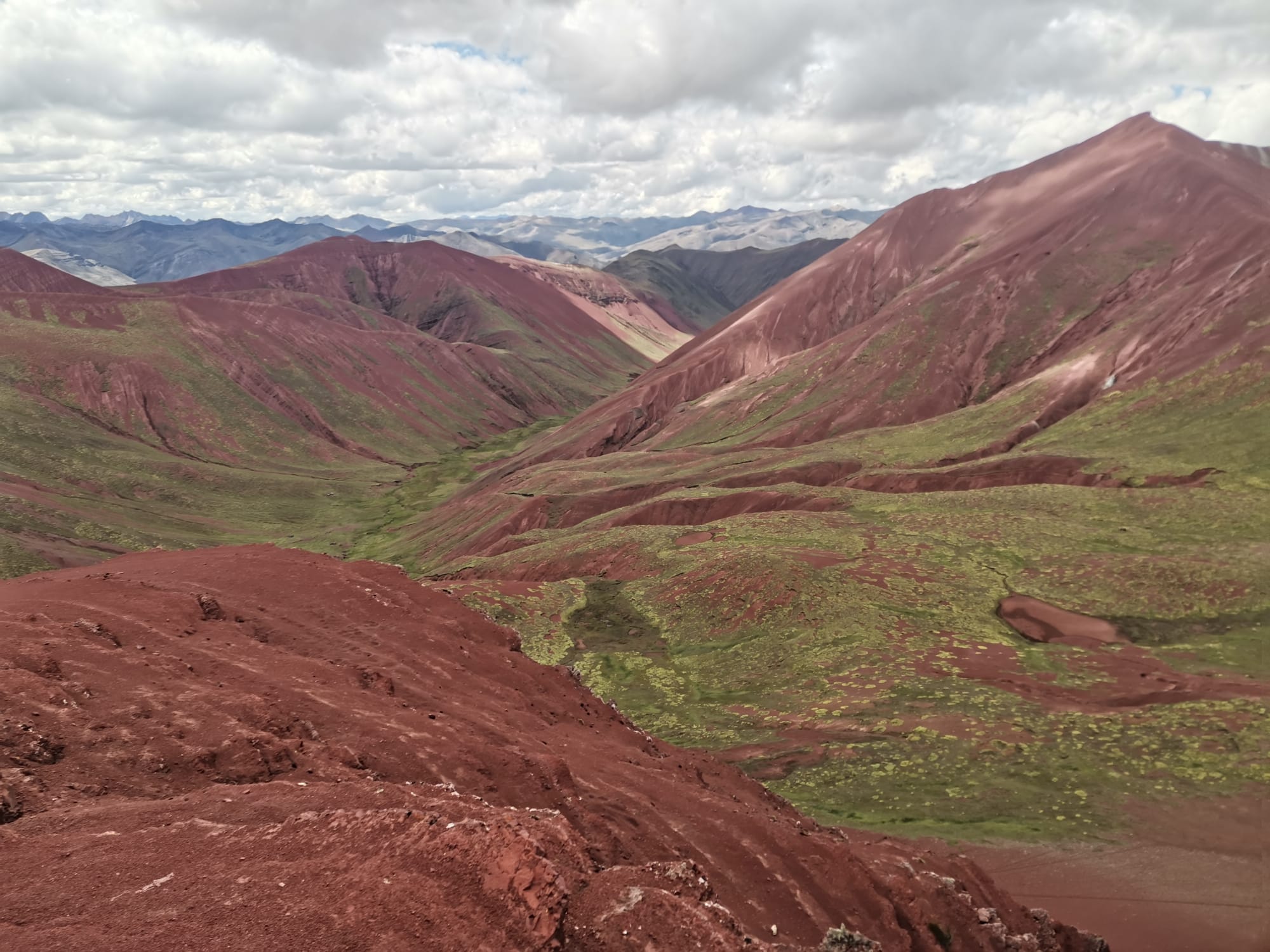
The name of the mountain is quite self-explanatory, and since it is so popular it is impossible not to see photosWe had assumed most of the photos we had seen were heavily edited, but we were actually impressed by how vibrant and colourful the mountain really was! of the unique colourfully-striped mountainside all over travel agencies in Cusco. The hike is tough, ending at just over 5,000m above sea level, but is absolutely worth the effort for the view. We were just as impressed with the rest of the panorama as we were with the mountain itself. The viewpoint is 360 degrees of unbelievable scenery, with colourful valleys, icy mountain tops, and dramatic rugged landscapes we genuinely didn't know where to look. After enjoying our time at the mountain, we paid for the extra entrance fee for the appropriately named red valleyThe red valley is only 15 minutes walk from Rainbow Mountain, and many people claim it is even more impressive than the mountain itself..
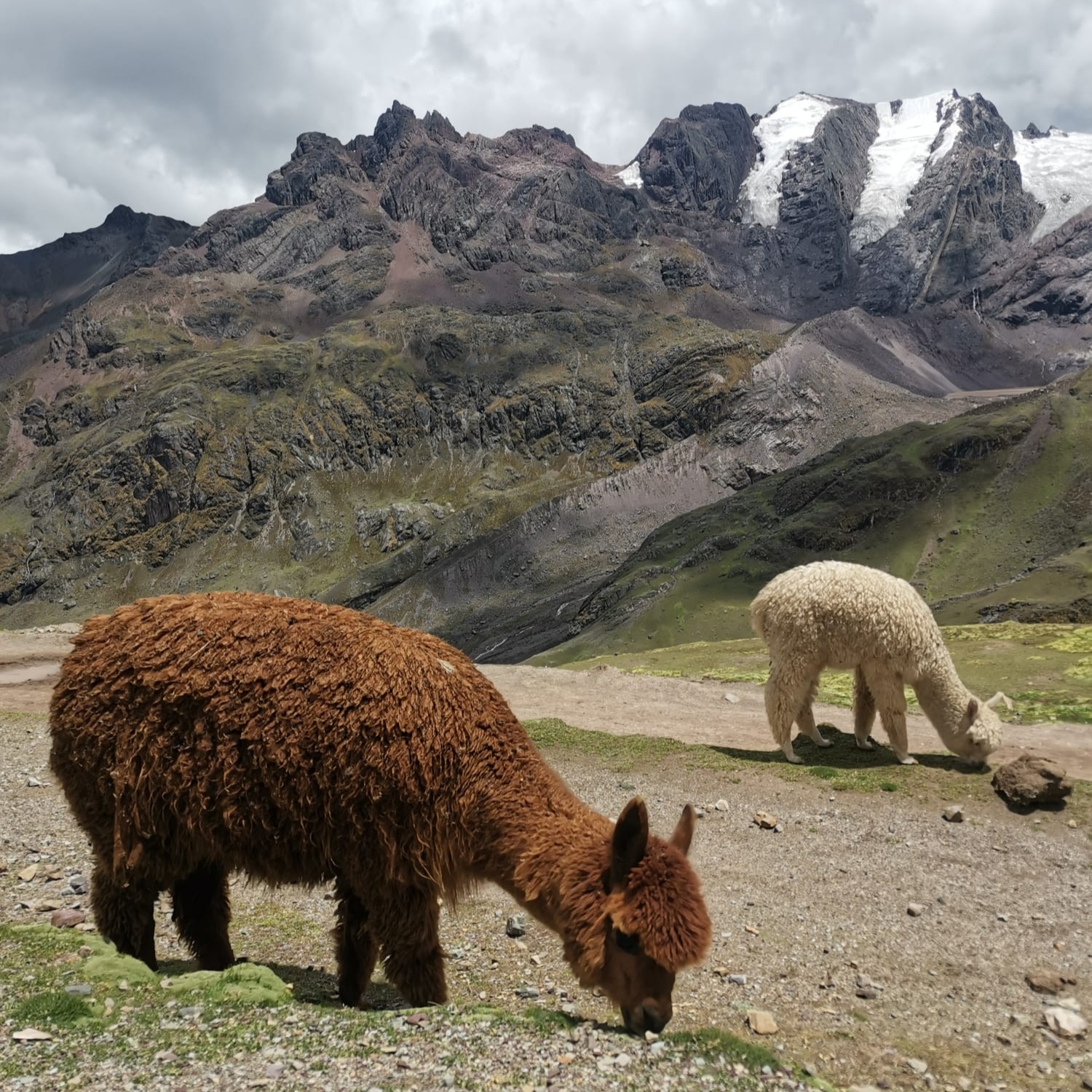
What they don't show you though, is the view behind the camera. Rainbow mountain has become very successful, so it is now incredibly busy with tourists all trying to get the same iconic photo. We had to wake up at 2:30am for our tour to make sure we arrived before the crowds. It was tough, but well worth it!
Humantay Lake
Another popular hike from Cusco is Humantay lake. Similar to rainbow mountain, this hike requires an early start and long car rideThe minivans have to drive down some shockingly bumpy roads which are only just wide enough for one vehicle. Our driver got into numerous stand-offs with oncoming vahicles, with both refusing to back up. At least everyone managed to sleep through most of the smaller bumps!, to get to the starting point. The hike is an hour uphill to reach the lake at 4,400m above sea levelThis was our first time above 4,000m. The hike is often considered as a good practice for the Inca trail, which reaches a maximum of 4,200m. Generally, if you don't feel any altitude sickness at Humantay lake, you've got the green light for the Inca trail too.. For the people who were feeling the effects of the altitude, or just didn't feel up for the climb themselves, horsesHorses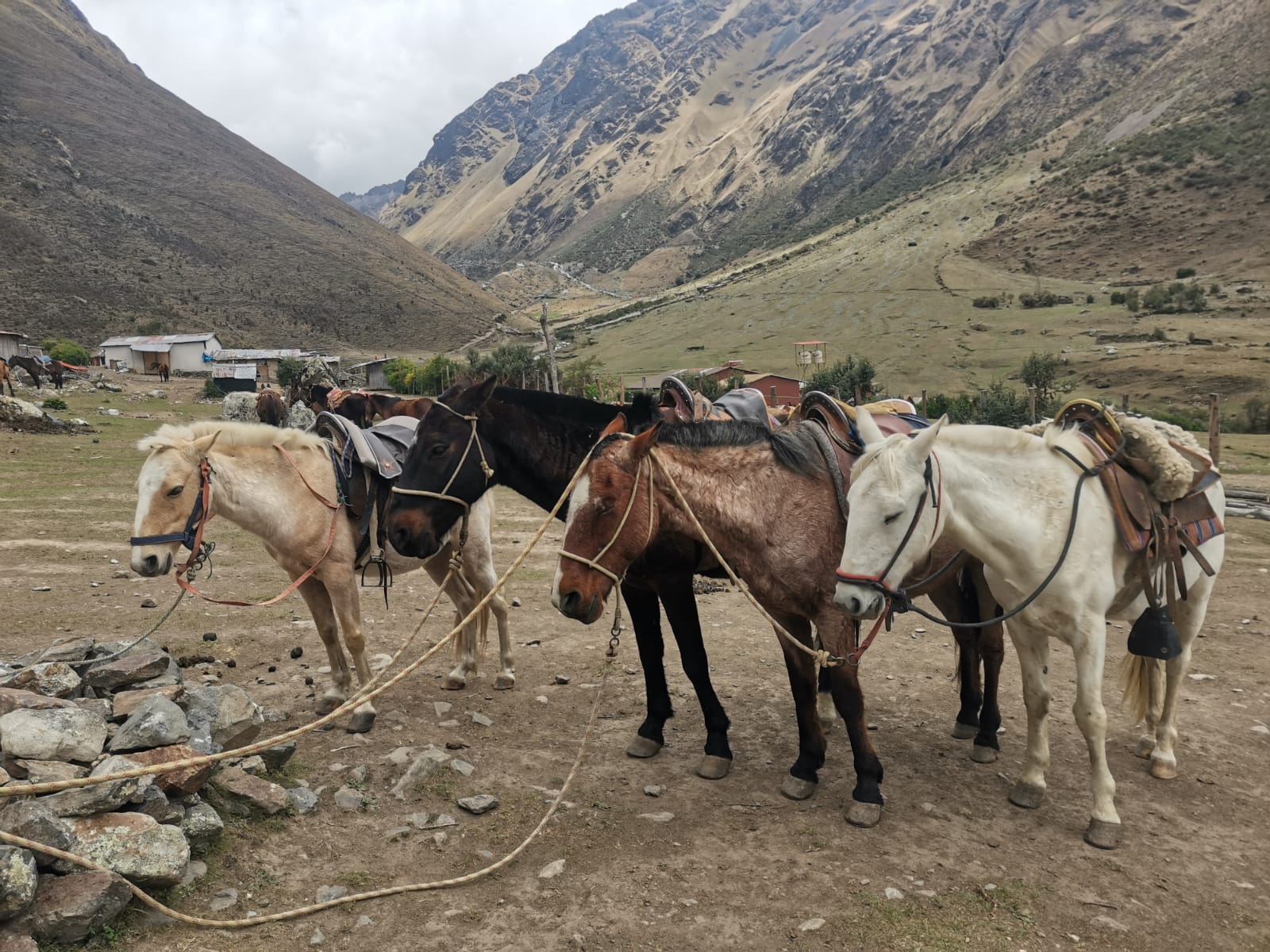 Many locals make money by standing at the bottom of the hills with their horses or donkeys, and charge quite a lot to take tourists up to the top. were available to hire.
Many locals make money by standing at the bottom of the hills with their horses or donkeys, and charge quite a lot to take tourists up to the top. were available to hire.
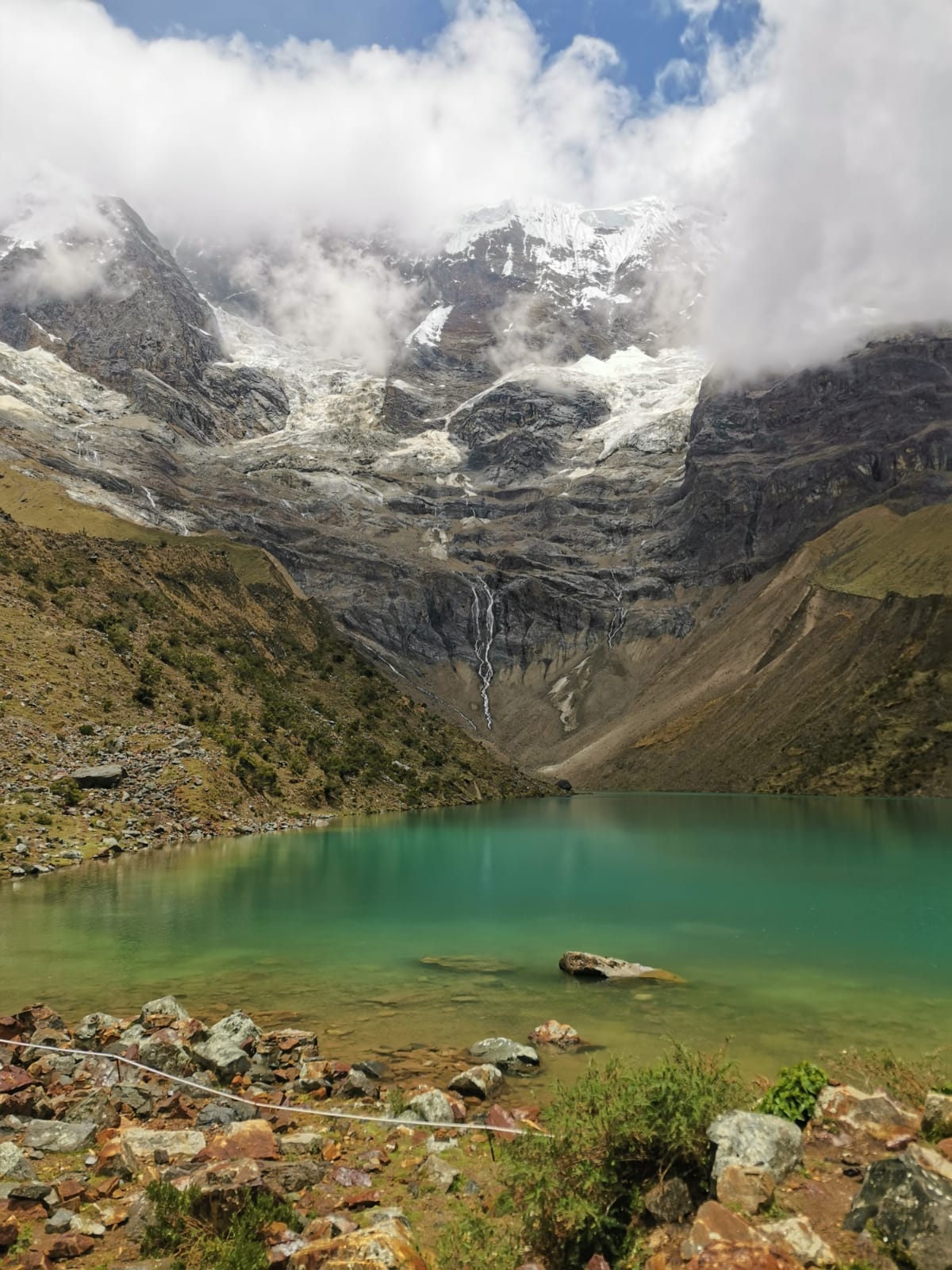

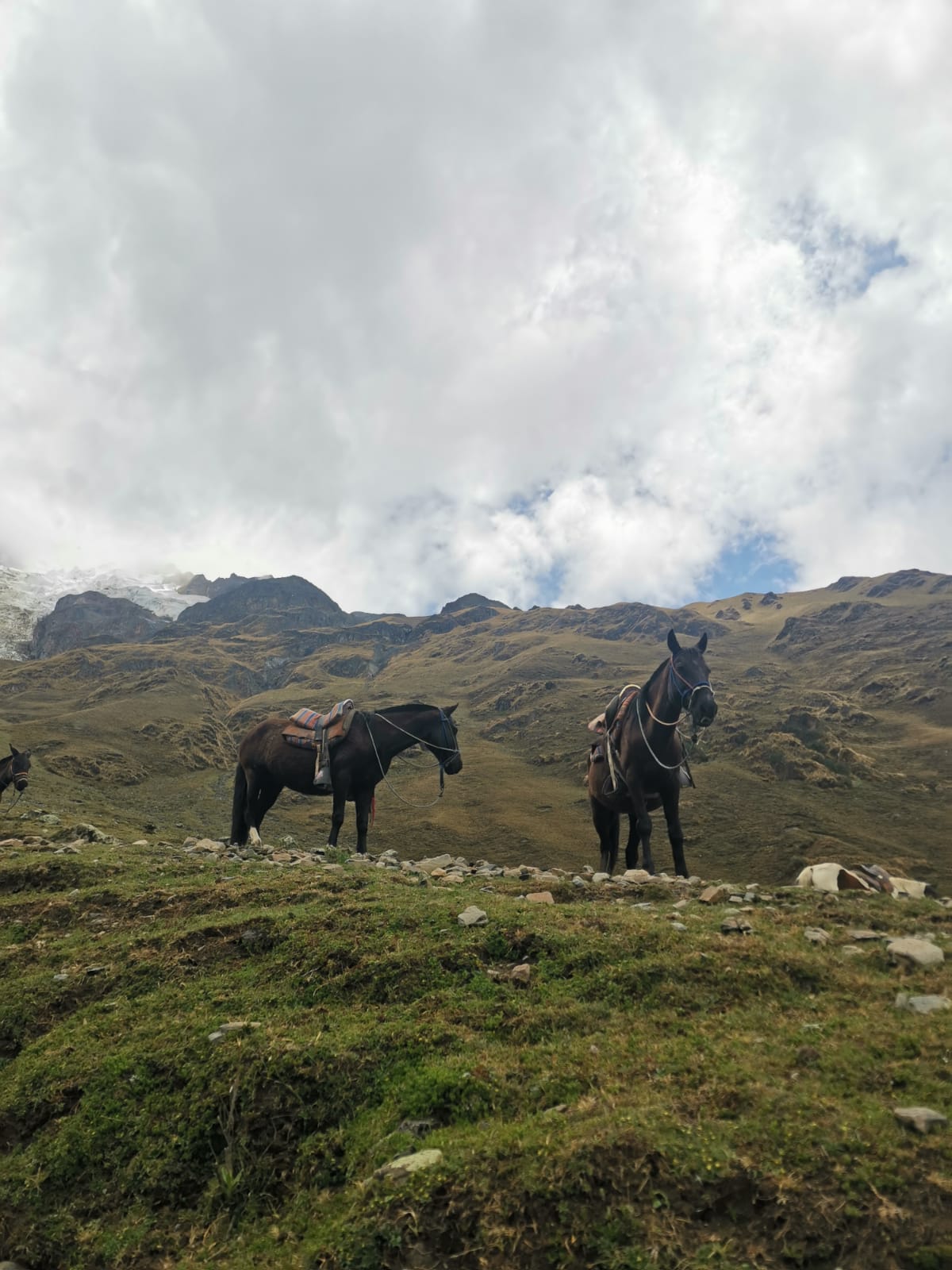
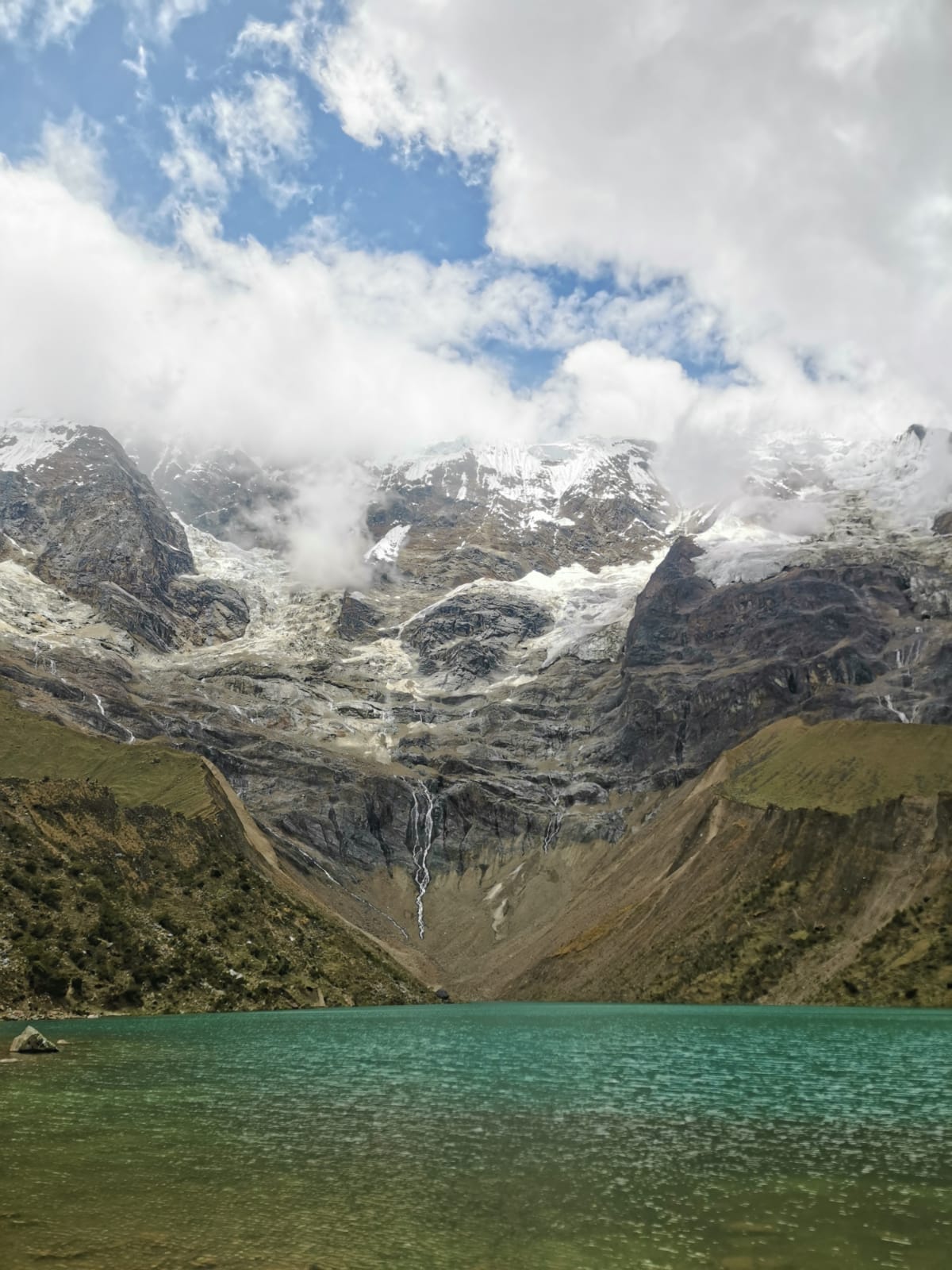
The lake itself has impossibly turquoise waters, with the minerals from the mountains acting as a natural photoshop to stun us with their vibrant colours. Although mostly cloudy due to the altitude, when the sky eventually cleared, the combination of the crystal lake, icy mountain looming above, and the blue sky was unbeatable, and felt like it belonged on the front cover of a Patagonia magazine. Humantay lake can get very crowded, but because the lake is so large, it is possible to walk around the perimeter to escape from the worst of the crowds. The lake is one of those places you feel like you could stay forever, however after our guide explained the relationship between the indigenous people and the mountains or ‘Apus’, we headed back down. Towards the end of the walk back, several locals were selling traditional snacks, like corn and cheese and picaronesPicarones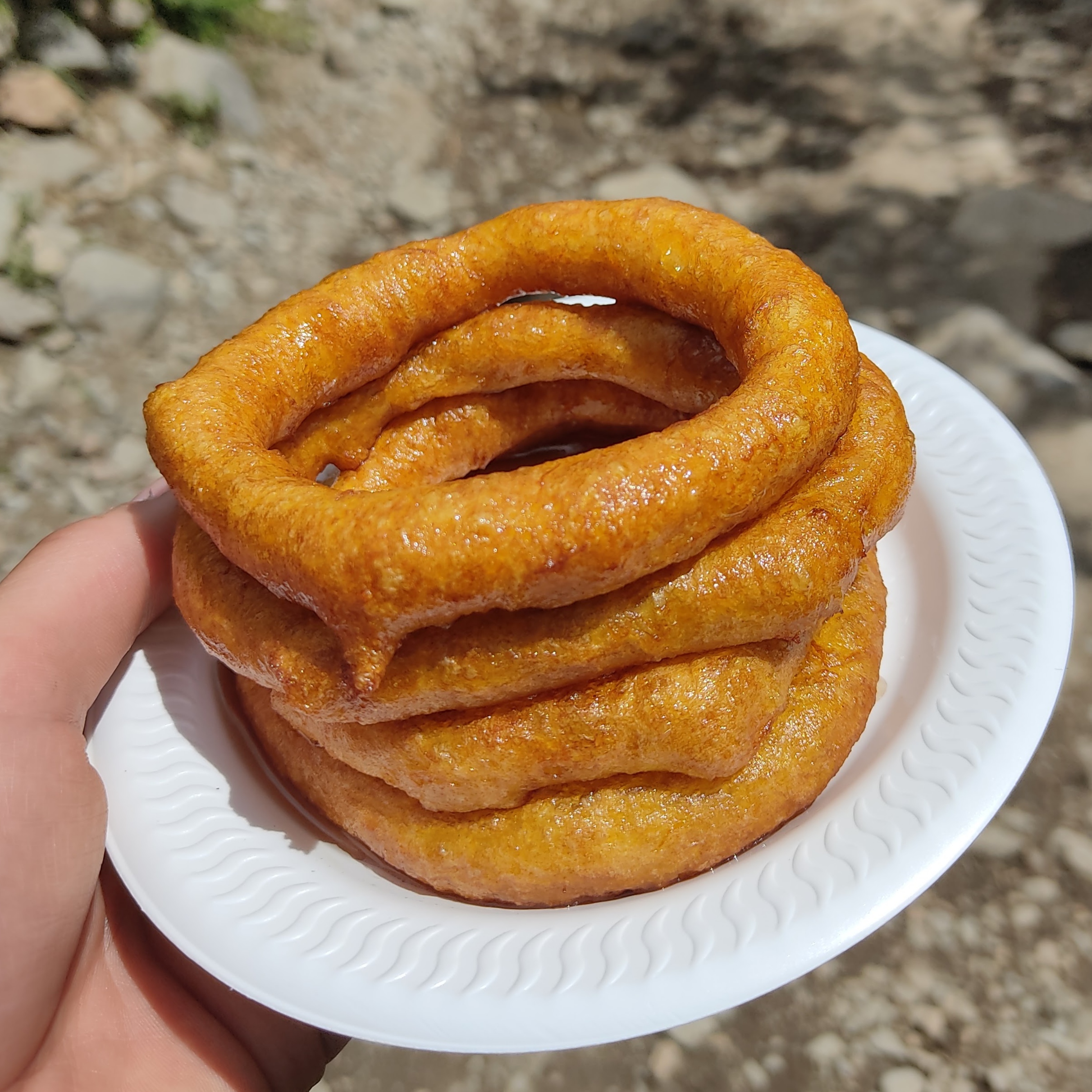 As well as renting out their horses, the families living on the trail offer freshly cooked snacks as a treat to those who have completed the hike. Picarones are a Peruvian special, consisting of a deep-fried dough made from sweet potato and served with a drizzle of honey., which were a suitable treat after the tiring trek.
As well as renting out their horses, the families living on the trail offer freshly cooked snacks as a treat to those who have completed the hike. Picarones are a Peruvian special, consisting of a deep-fried dough made from sweet potato and served with a drizzle of honey., which were a suitable treat after the tiring trek.
Most of the tours to Rainbow mountain and Humantay lake will stop off at a local restaurant for a buffet lunch on the way back to Cusco. This is included in the price, and we found this one of the best ways to try a range of delicious local foods.
The Sacred Valley
Cusco is a very touristy city, which does have many benefits but also dilutes some of the local culture and traditions. However the small towns which lie further away in the sacred valley have a less touristy feel and better-preserved local traditions. ColectivosTravelling in the Sacred Valley
Although there are many tours available all over the sacred valley, we decided in true budget-backpacker fsshion, to do to independently. Collectivos are very cheap shared minivans, which the locals use to get between towns. There are no set schedules, they just leave when they are full, but passengers frequently get on and off as they please along the route. became our best friends, as we unlocked cheap travel around the nearby villages. It was a perfect sunny day when we visited the small town of Pisac, a friendly and charming town which we later found had a prominent community of hipster European expats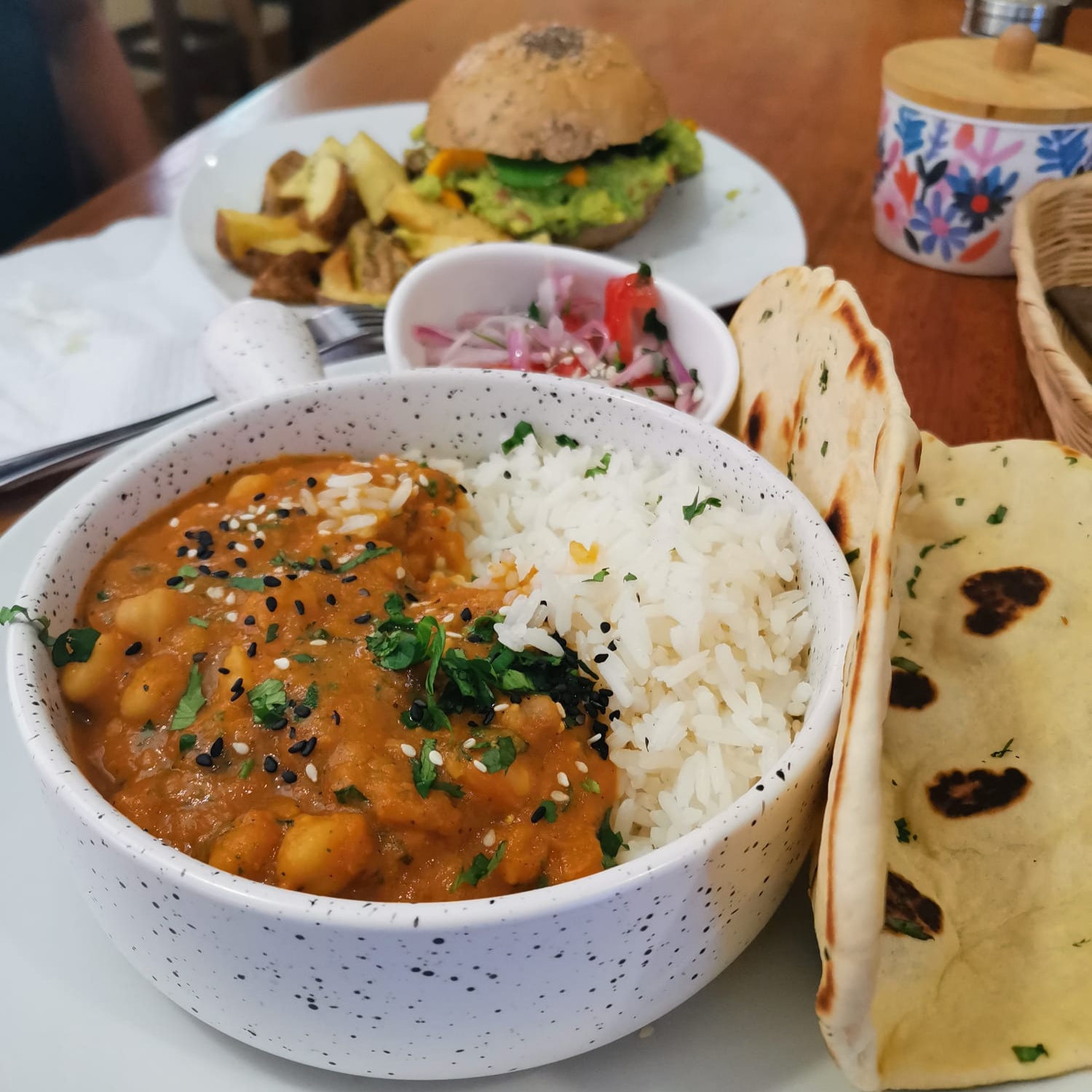 The influence of the European expats meant that there were loads of organic, vegan restaurants and healthy food options in Pisac., many of whom are raising their families in this small Peruvian town. Pisac is an incredibly picturesque labyrinth, with narrow grid-like streets topped with bunting, crowded with locals selling a range of goods. The town receives its fair share of visitors, who briefly stop by the artisanal market en route to other towns in the Sacred Valley. Rather than the artisanal market, we spent a lot of time in the local food market, which is an excellent place to try some local fruit, and get the best fresh smoothies
The influence of the European expats meant that there were loads of organic, vegan restaurants and healthy food options in Pisac., many of whom are raising their families in this small Peruvian town. Pisac is an incredibly picturesque labyrinth, with narrow grid-like streets topped with bunting, crowded with locals selling a range of goods. The town receives its fair share of visitors, who briefly stop by the artisanal market en route to other towns in the Sacred Valley. Rather than the artisanal market, we spent a lot of time in the local food market, which is an excellent place to try some local fruit, and get the best fresh smoothies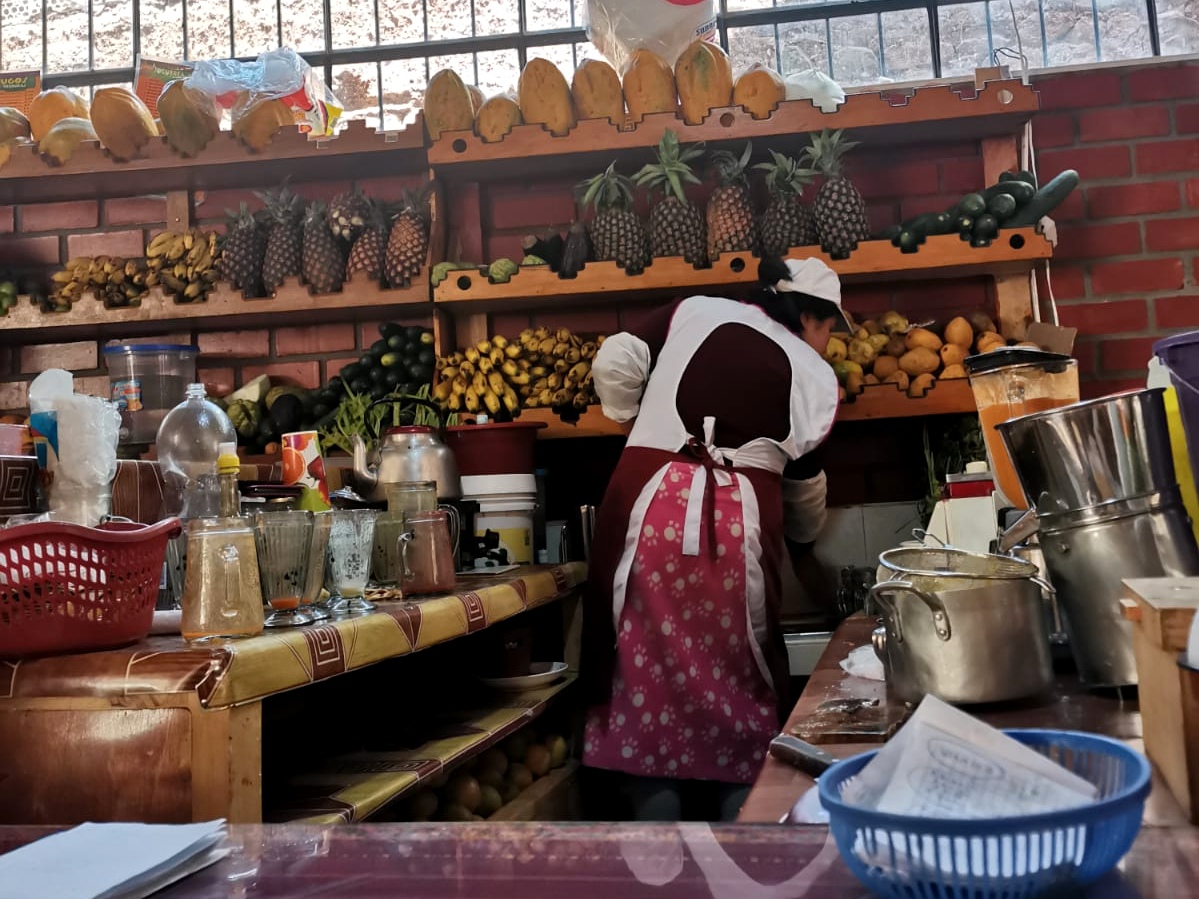 The smoothies in the market were incredible. They are served in a glass, but when you hand it back to say how delicious it was, the owners refill it before you can get a word in. It seems they make the smoothies by the litre, and will keep refilling your glass until its all gone for no extra cost, so really you get between 2 and 3 glasses full. Maybe the best value smoothies in the world? around.
The smoothies in the market were incredible. They are served in a glass, but when you hand it back to say how delicious it was, the owners refill it before you can get a word in. It seems they make the smoothies by the litre, and will keep refilling your glass until its all gone for no extra cost, so really you get between 2 and 3 glasses full. Maybe the best value smoothies in the world? around.
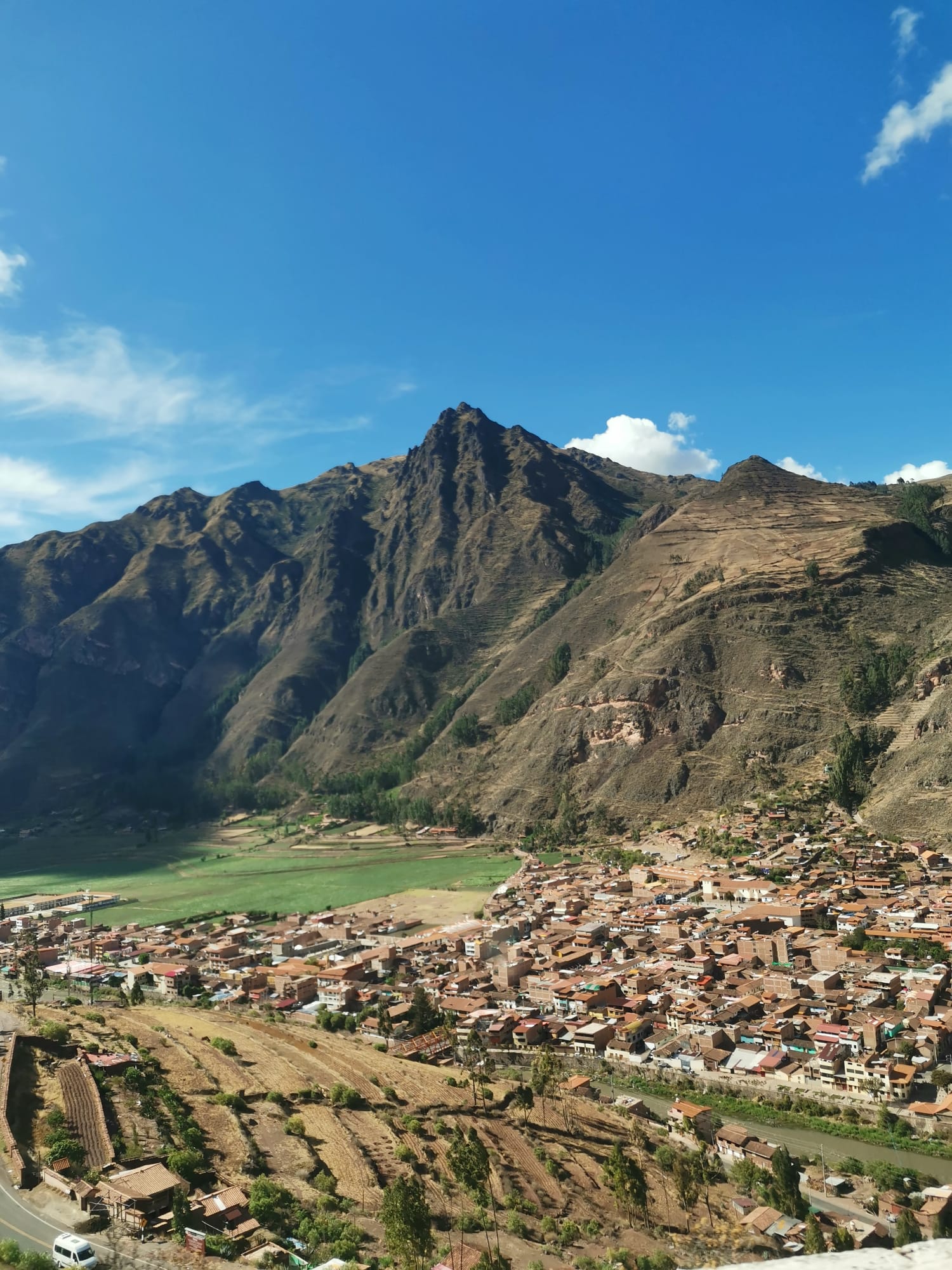
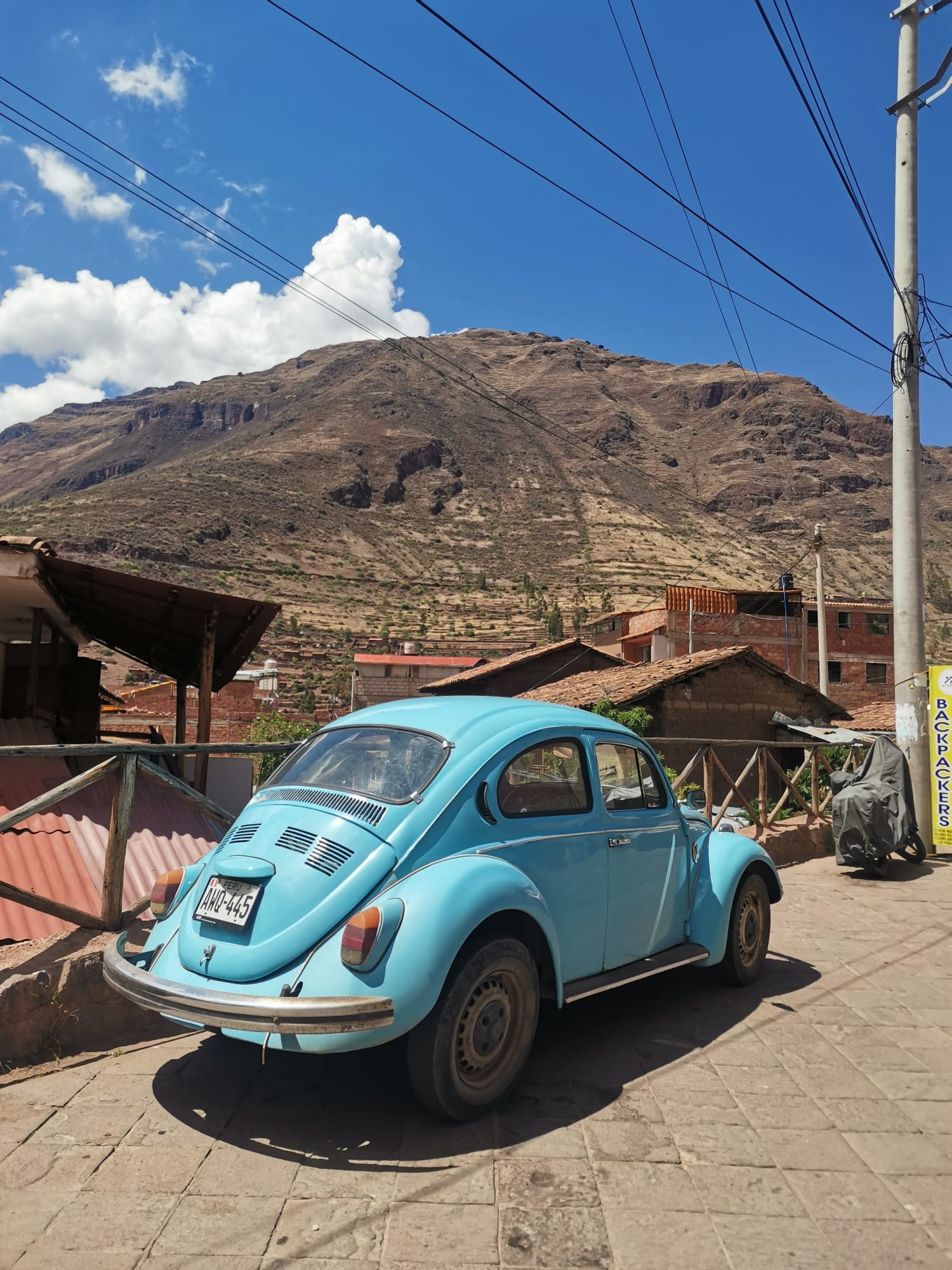
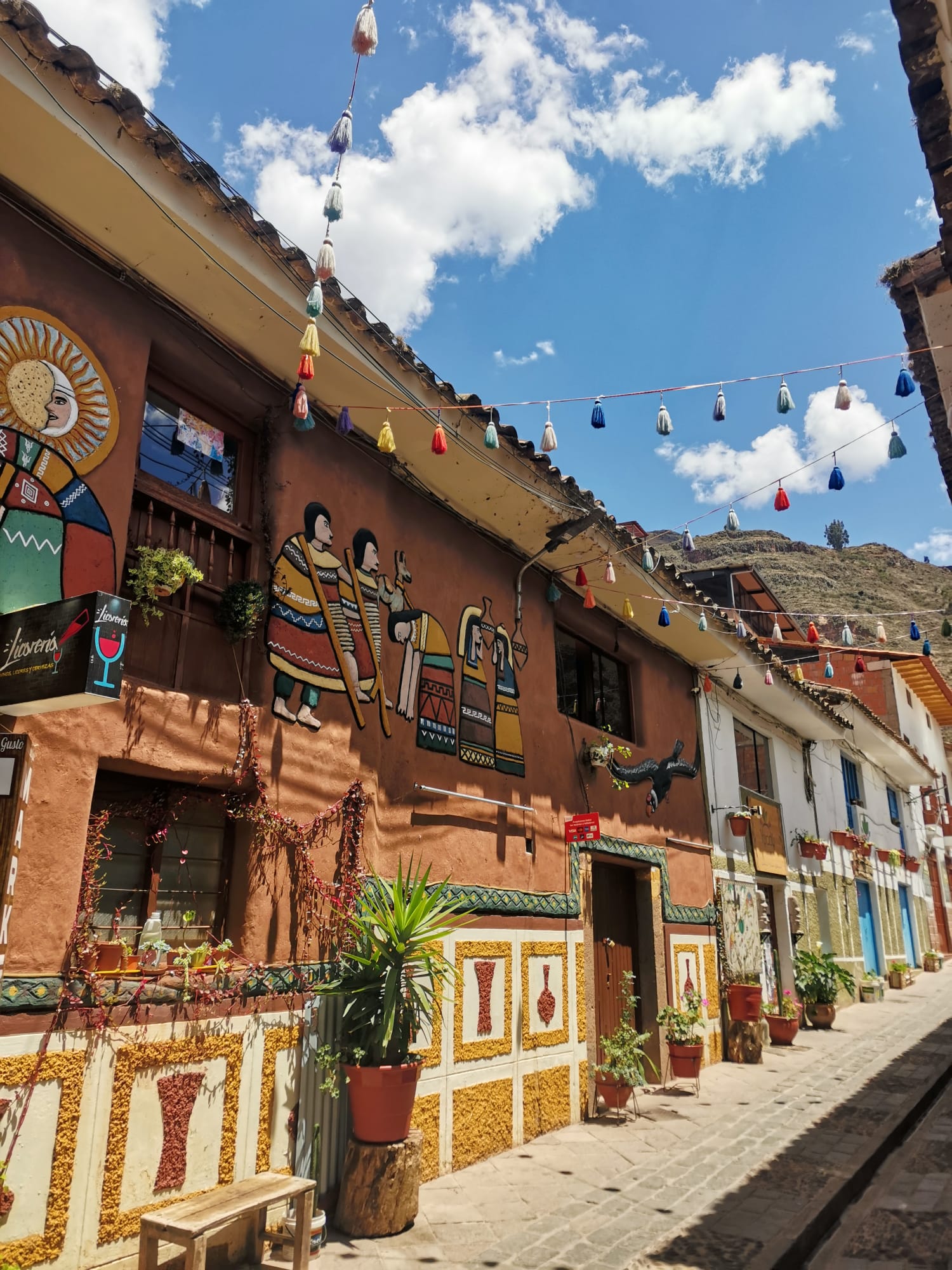
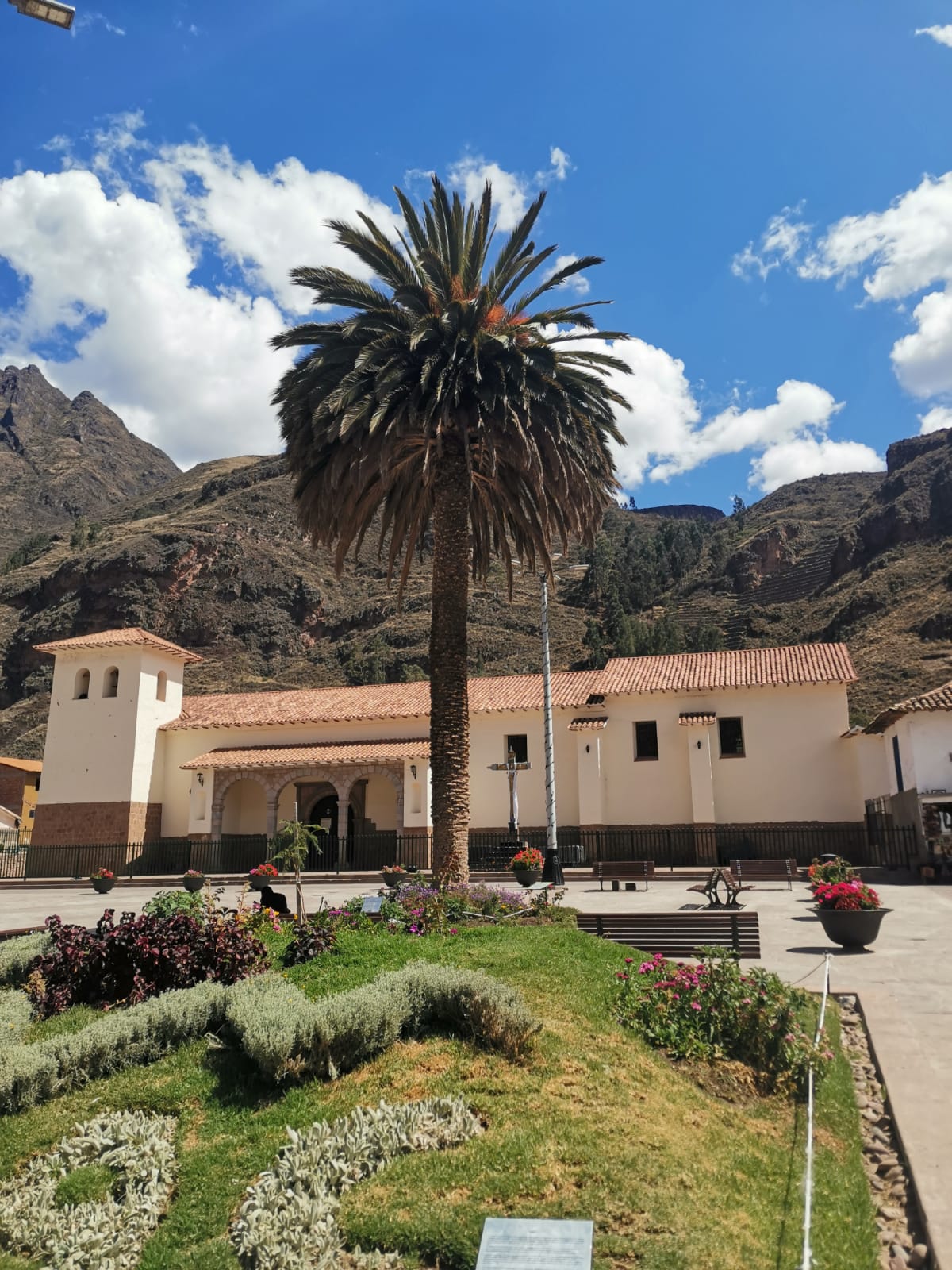
A few days later, we visited the sacred valley again, this time disembarking our colectivo in Chinchero, a village even quieter than Pisac, further off the beaten track. The people of Chinchero have mastered the art of traditional weaving, as is evidenced by the products sold at the marketWe had read that the market was a bustling place where locals come and barter and trade goods, however it was quite quiet on the Sunday that we visited., where you can often find women working on their next projects whilst simultaneously selling their work. Many of the locals wear traditional outfitsPeruvian outfits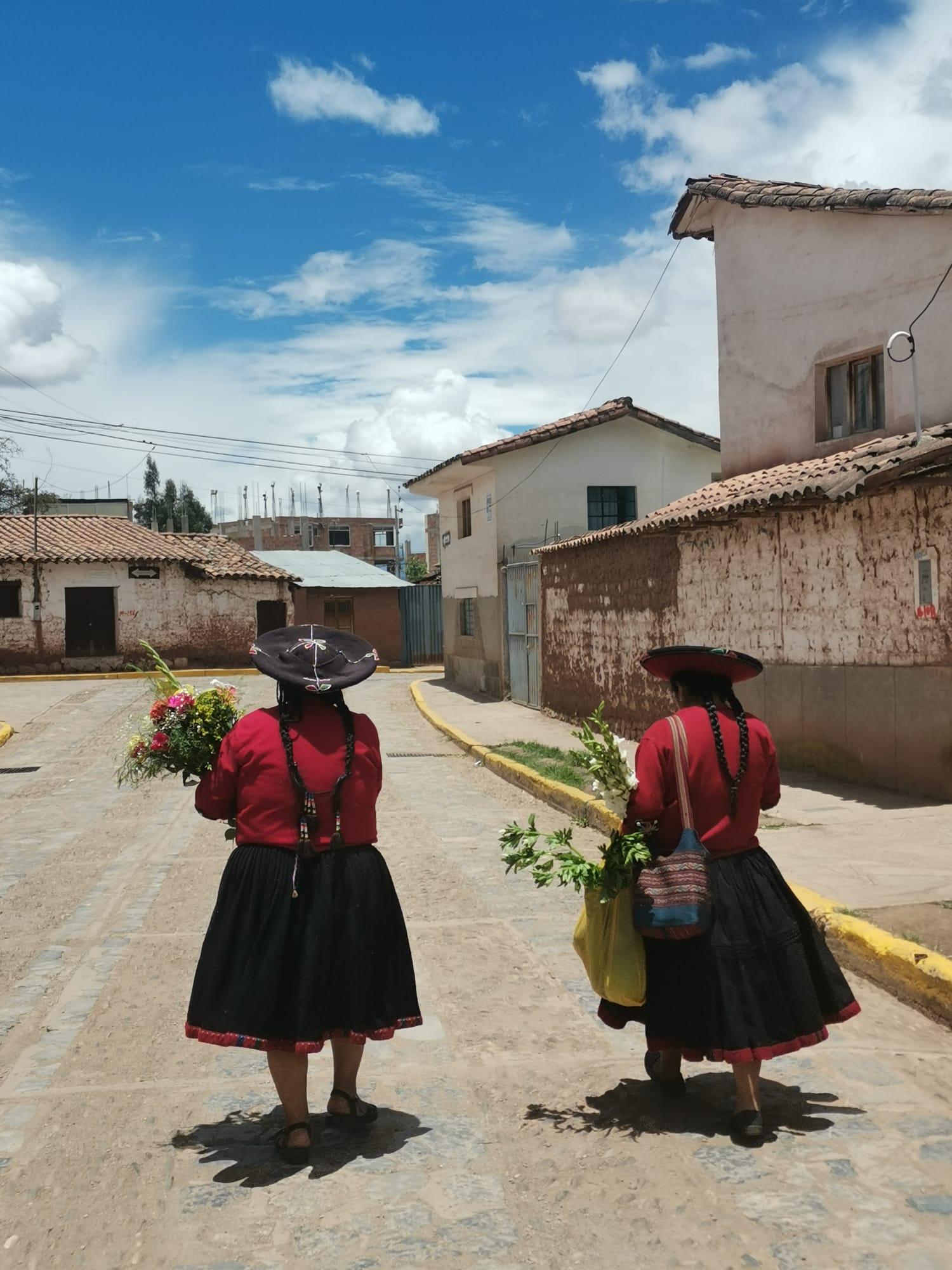 Many women in the sacred valley srill wear the tradirional andian clothing, complete with long braids., complete with red dresses and hats, which brightened up the town.
Many women in the sacred valley srill wear the tradirional andian clothing, complete with long braids., complete with red dresses and hats, which brightened up the town.
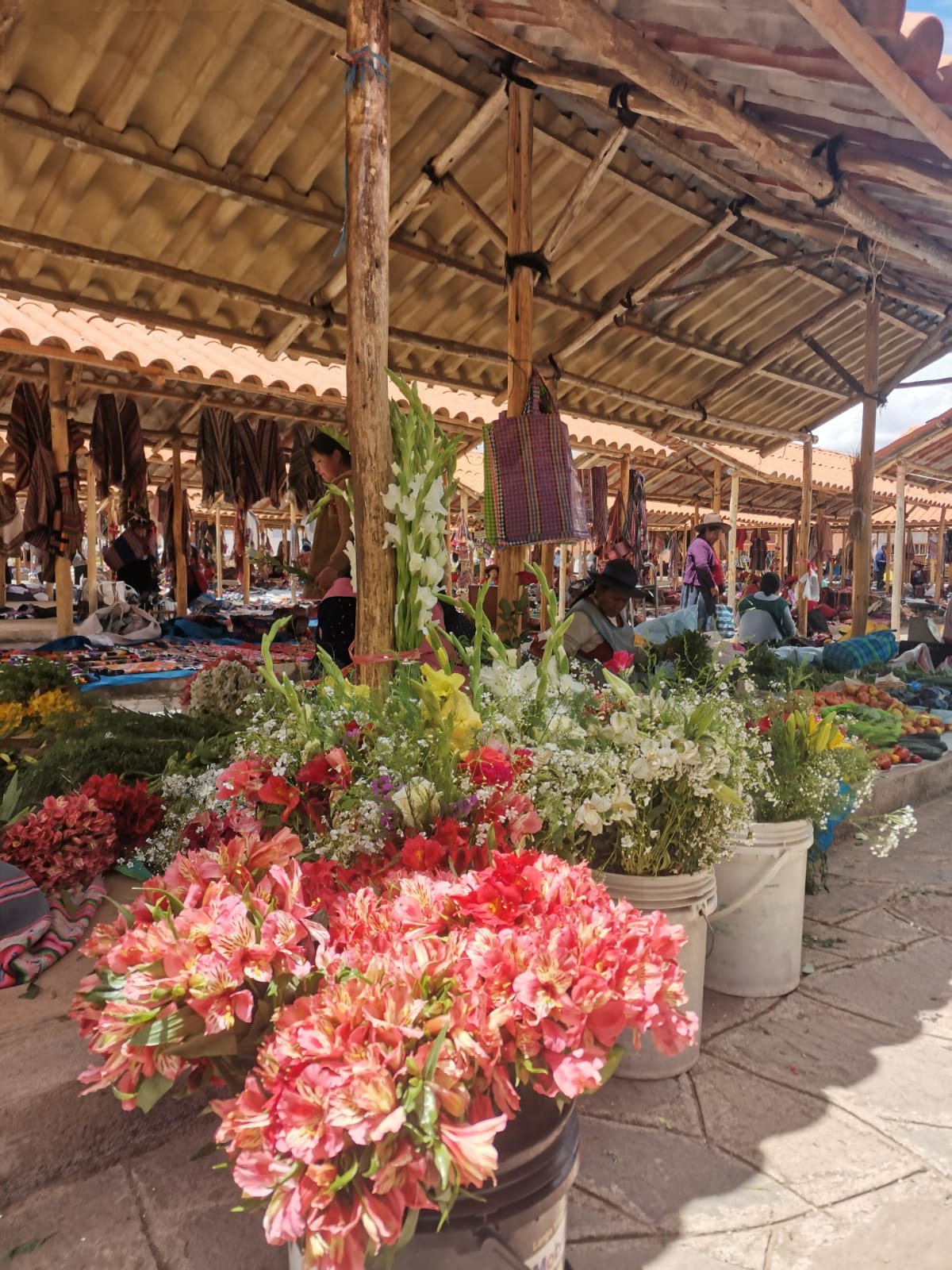
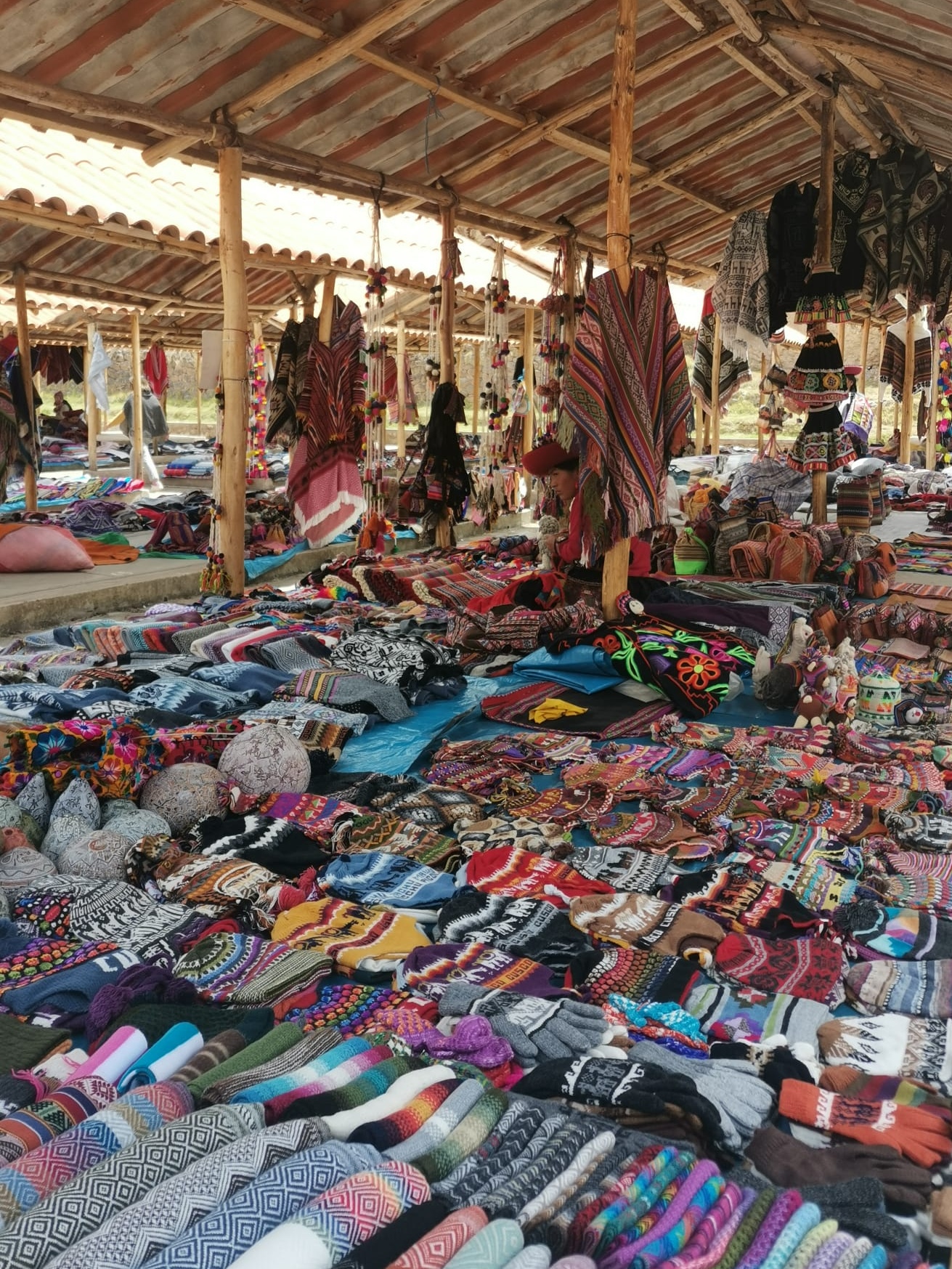
Afterwards, we took a taxi from Chinchero to MarasWe had initially planned to get back on a collectivo and head to Ollantaytambo, the town at the starting point of the Inca trail to Machu Picchu. However, we had a last minute change of plans, since it wasn't clear how easily we could get a collectivo for this route and we met a friendly taxi driver who convincrd us to take the shorter drive to Maras.. This town is home to the salineras, a set of salt springs which are diverted into pools and left to evarporate, leaving behind the saltWe actually bought some 'sal de Maras' or Maras salt from the supermarket in Lima a few weeks earlier, before we had even heard of Maras. which is sold all over Peru. This ancient practice of obtaining salt has been maintained since the Incan times, and the extent of the pools was very impressive.
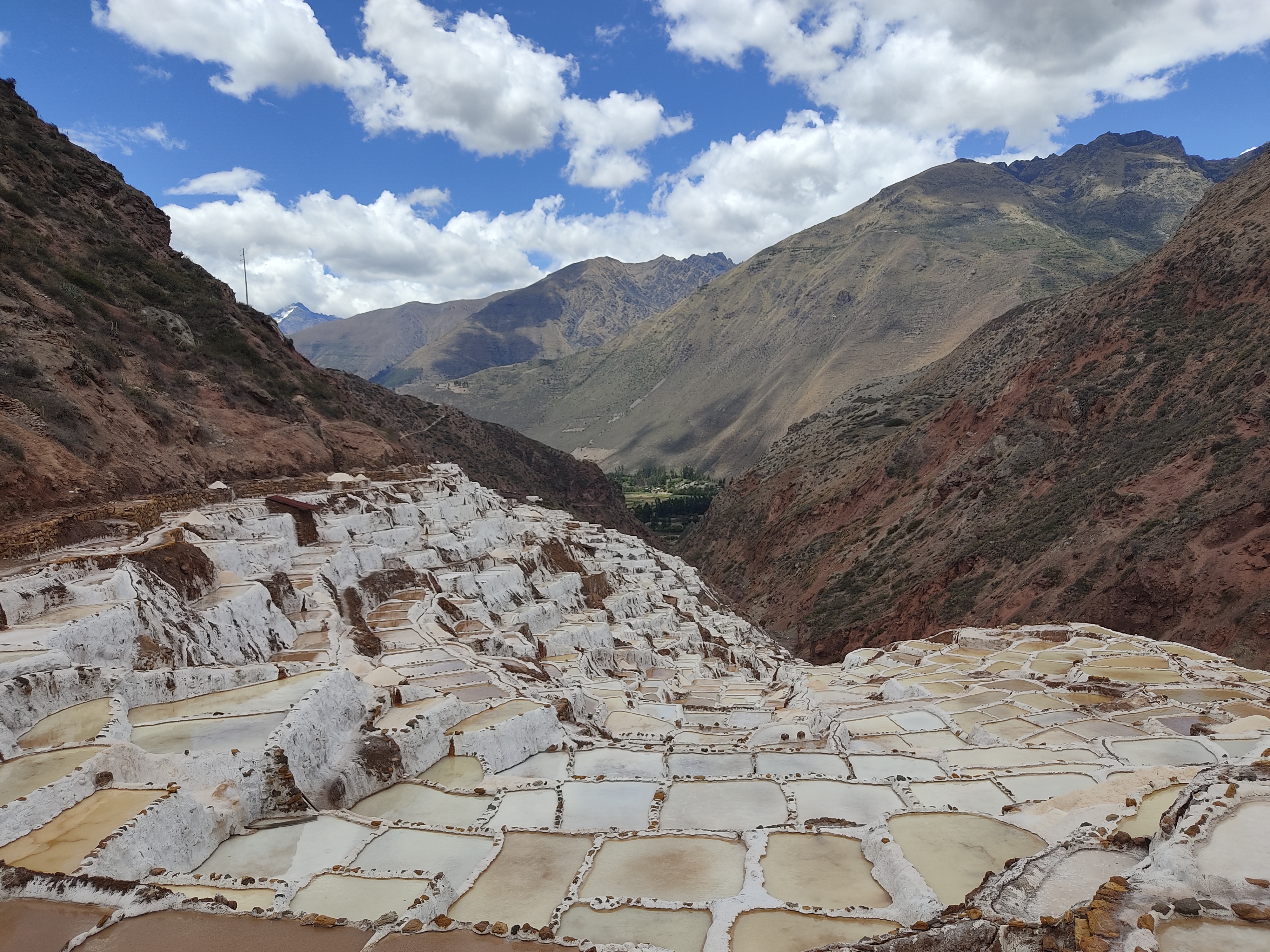
These excursions to the Sacred Valley are really cheap and easy day trips from Cusco, and are a great chance to get out into the quiet countryside and see the natural landscapes after being in the urban centre of Cusco. Most of the towns in the sacred valley have their own ruins and archaeological sites, and although you can get one ticket to access all of these (Pisac, Chinchero, Ollantaytambo and Moray), we decided that we had seen plenty of archaeology on the Inca trail so decided not to purchase the ticket.
Overview
Cusco inevitably finds itself on every travellers Peru itinerary, and yet despite its popular reputation, it still manages to impress everyone who visits. In our time in south America, we met lots of people who had been to Cusco and every single one agreed that it was an amazing place.
